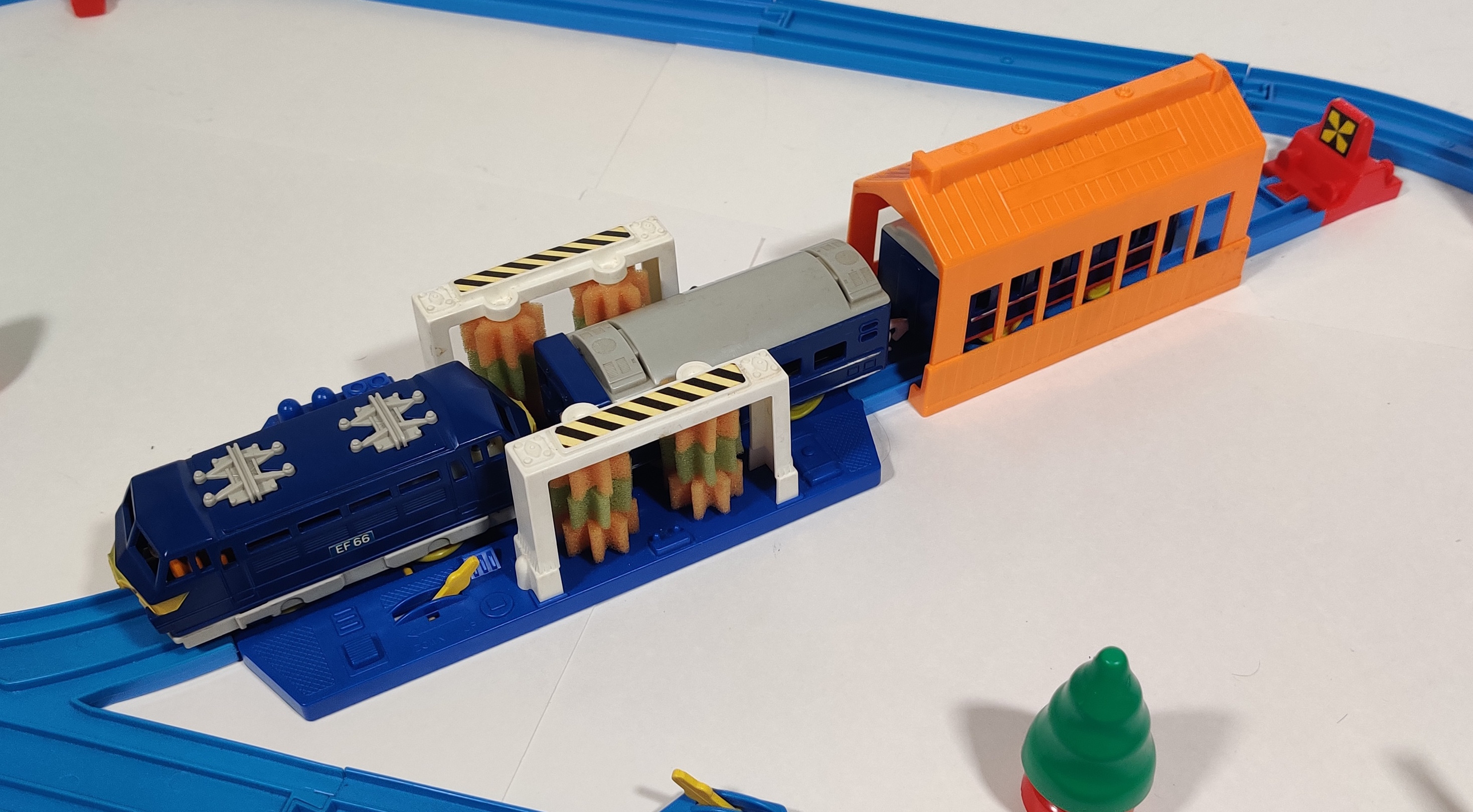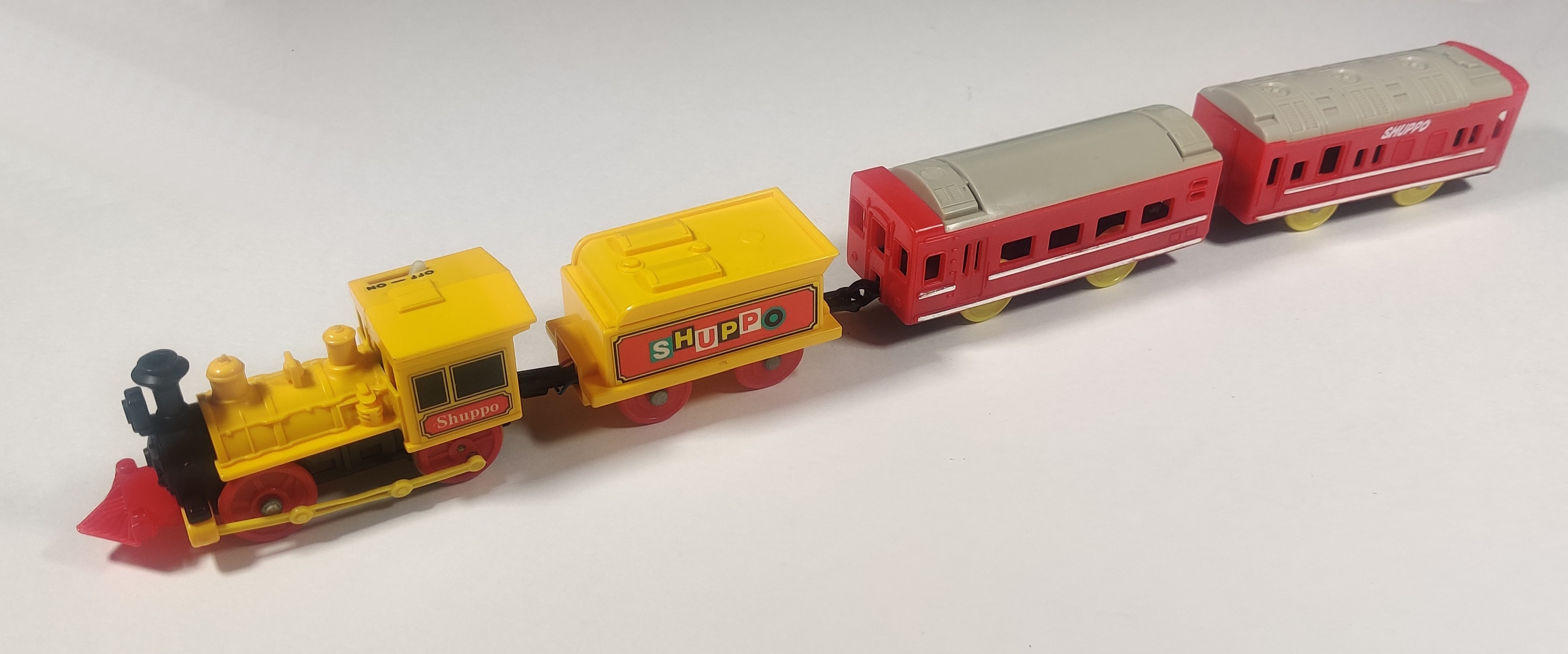fall inside a hole
Blue Train (1979)
First written November 3, 2023Expanded April 2024, April 2025, September 2025
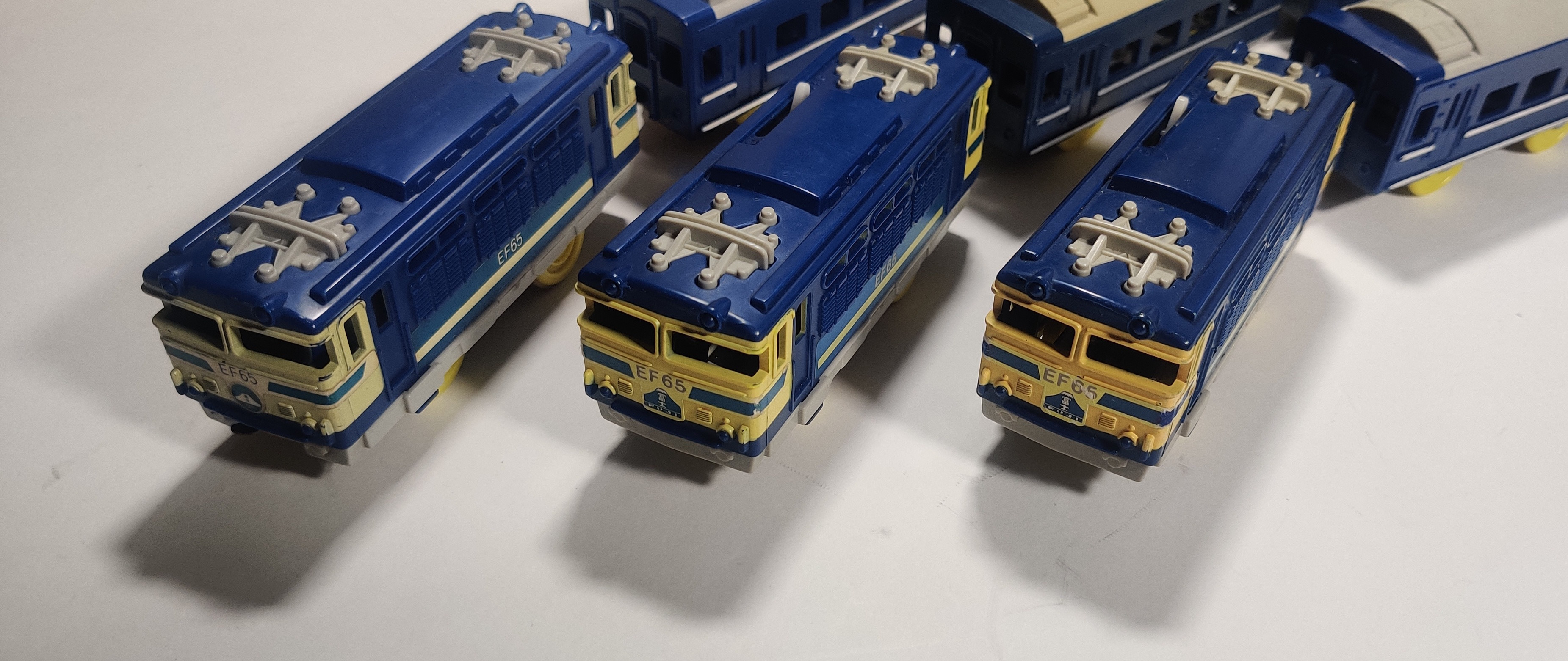
The Blue Train (ブルートレイン) is a standard three-car Plarail release that includes an EF65 electric locomotive and two 24-series sleeper passenger cars. Just over 300 EF65 locomotives were built between 1965 and 1979, the same year the first Plarail Blue Train was released. 1979 was during the period of rising in popularity of the Blue Train in the Japanese public mind known as the Blue Train Boom, which lasted into the early 1980s. 24 series cars began replacing older 14 and eventually 20 series cars and both the EF65 and 24 series cars were used on the "blue train" sleeper trains that ran from 1958 until 2015 as the expansion of the Shinkansen, air travel, and business hotels reduced the need for sleeper trains in Japan. The Plarail Blue Train bears the head and tail marks of the "Fuji" service.
EL-05 Blue Train (1979)



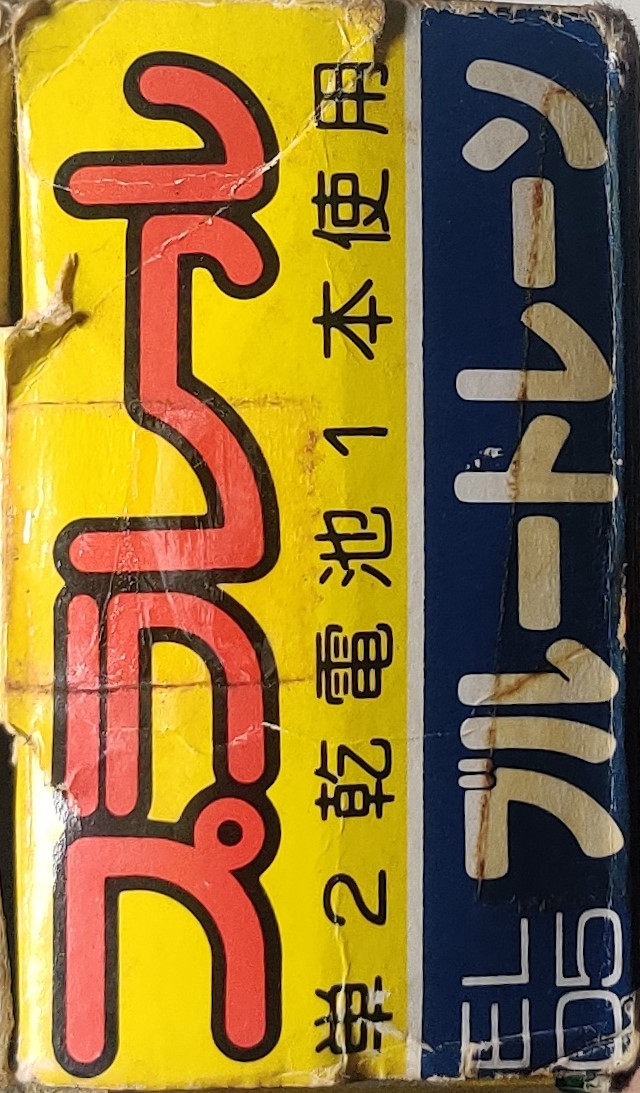


The original 1979 Blue Train (ブルートレーン) was given the designation EL05 and included an old power EF65 with two 24 series passenger cars. It was released in a fifth generation "EC" (or EL for Electric Locomotive in this case) box. Original 1979 and early 80s boxes would have used the "boy and girl" Tomy logo but the fifth generation boxes were updated to have the new curvy Tomy logo starting around 1982. My printing is marked N-33 meaning it was printed in 1984.
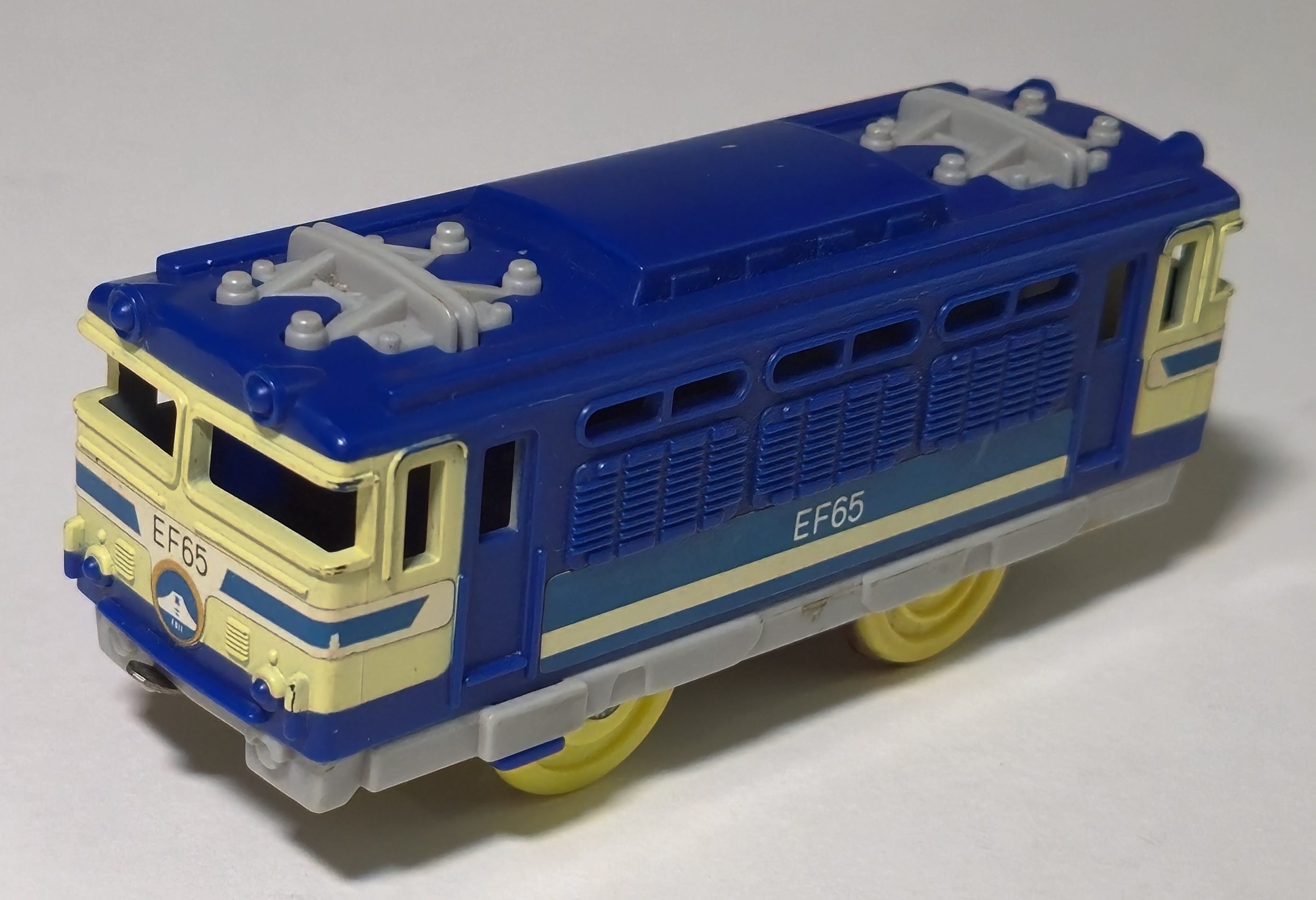
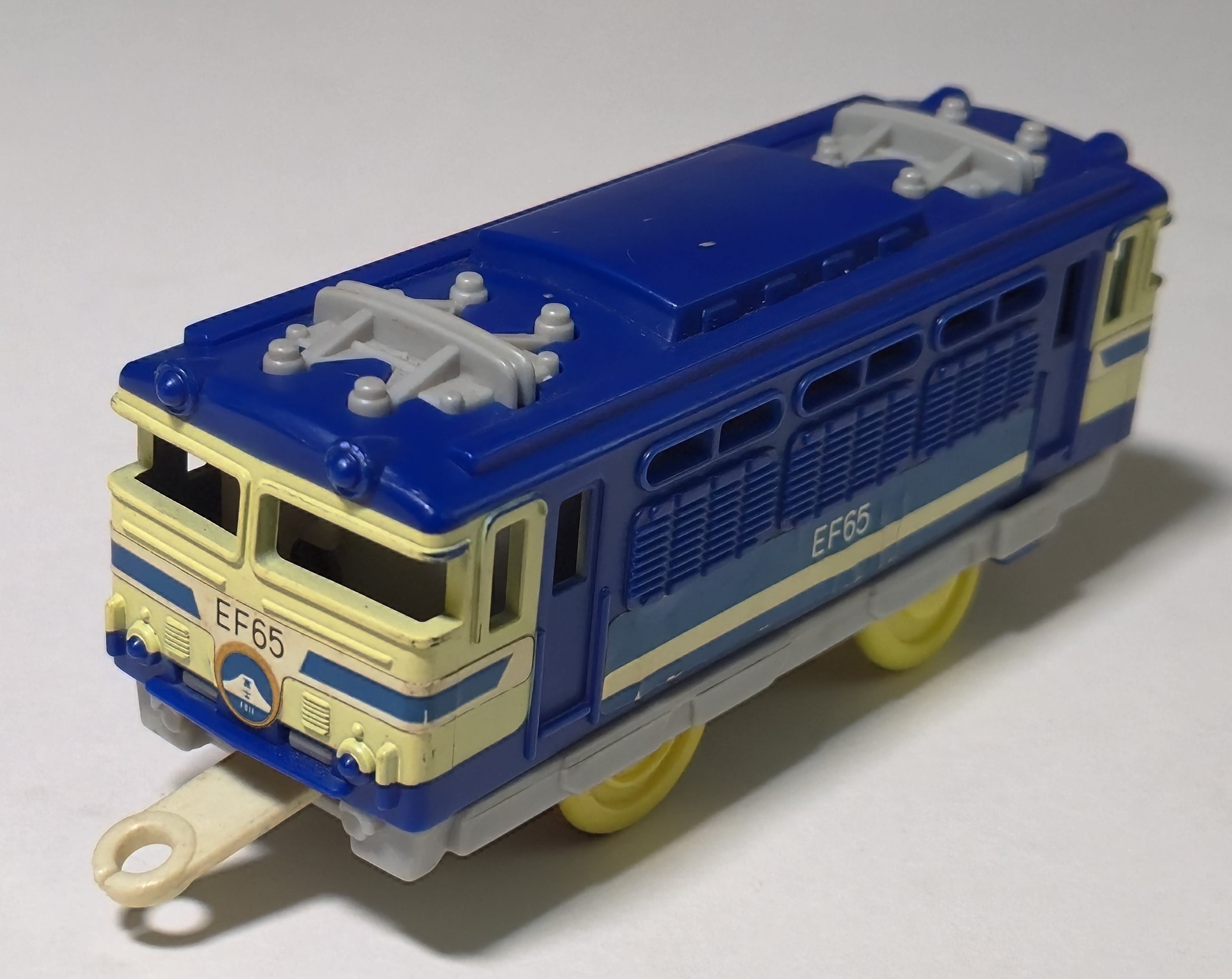
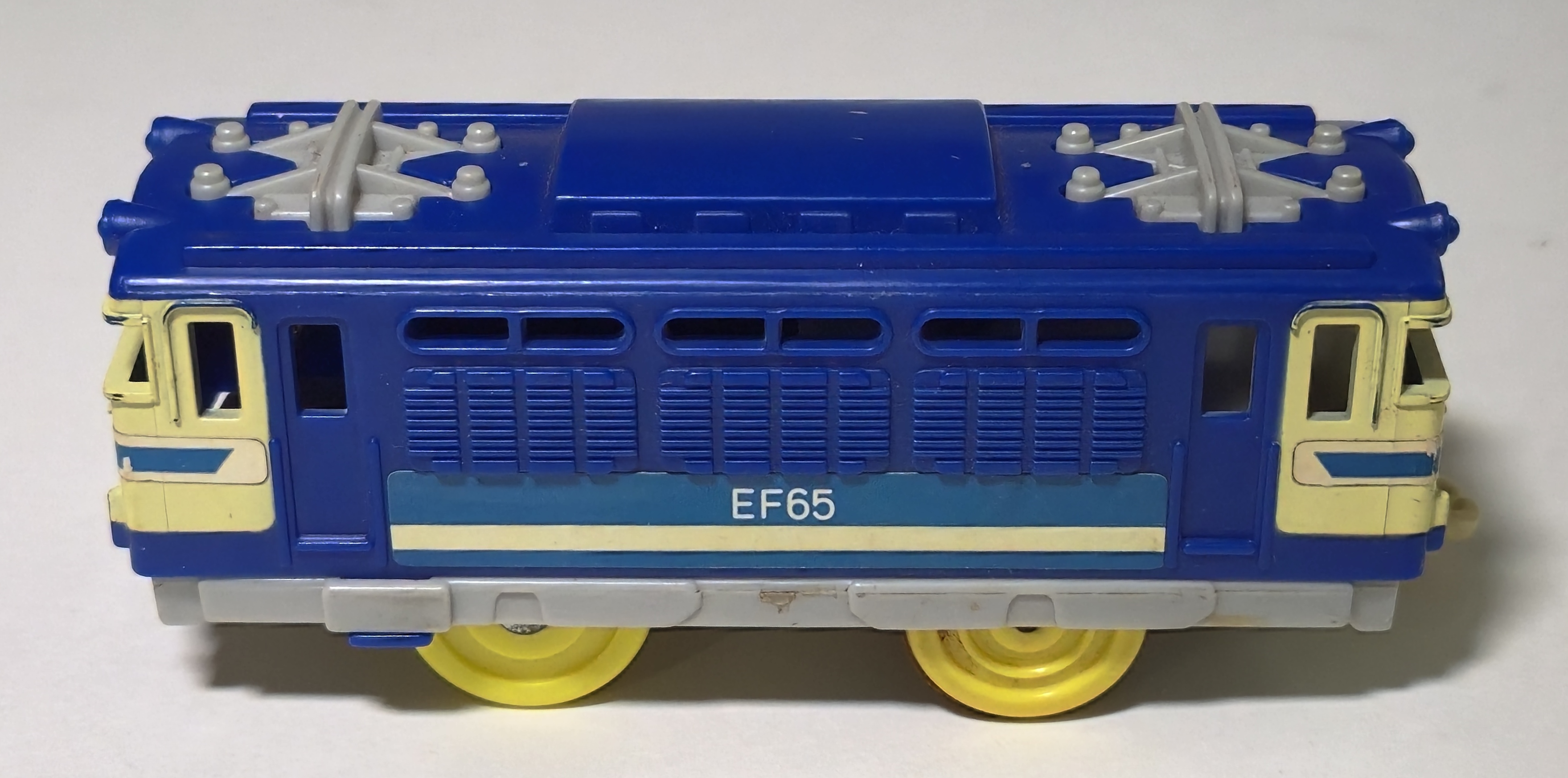
The EF65 is a nice blue color with yellow cab surrounds. Stickers on the front and rear of the locomotive include the Fuji headmark and the EF65 designation is also on the side stickers.

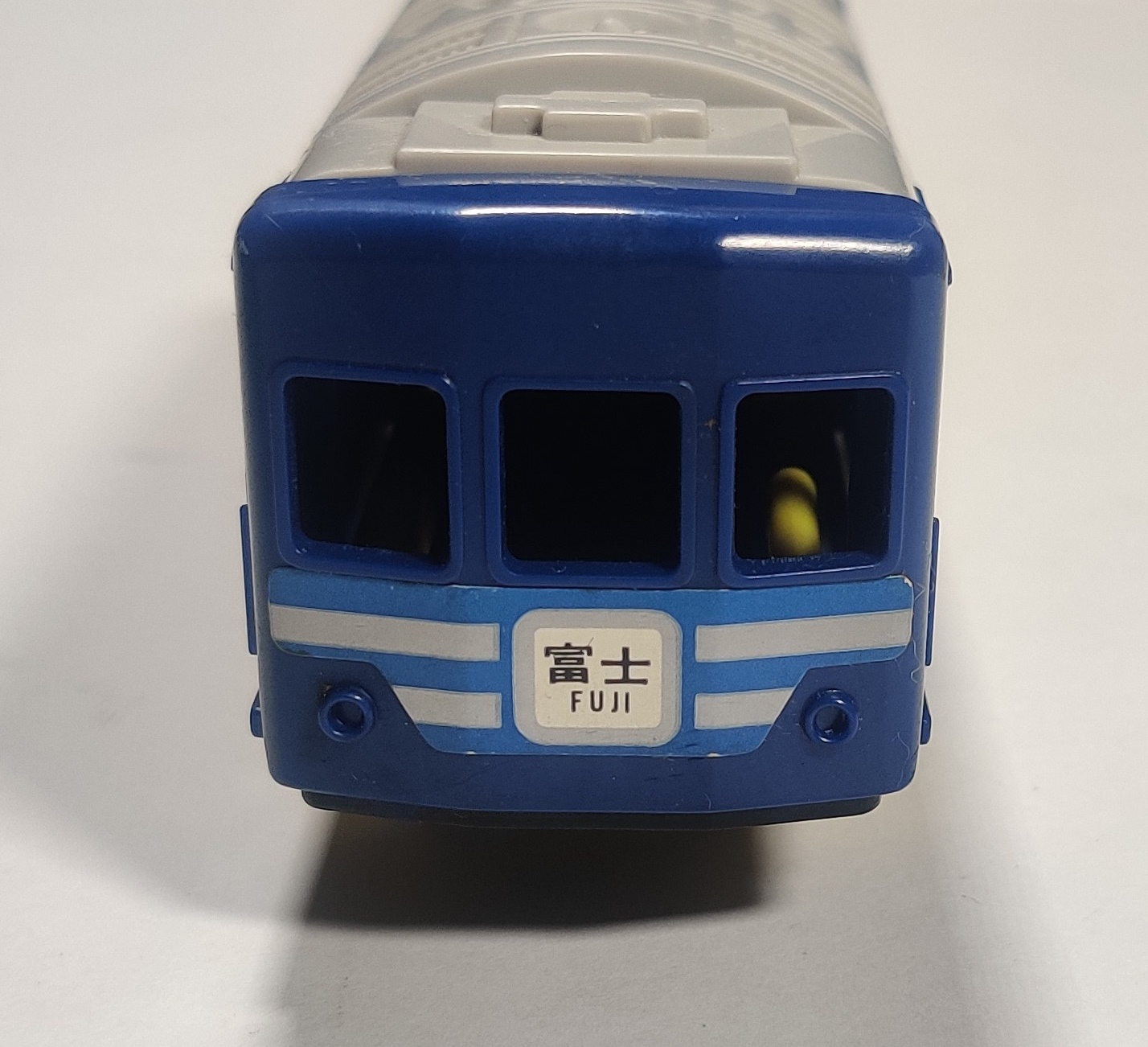
Coaches have a nice shiny lining and the sticker on the tail car also has the Fuji mark. The yellow on old power engines is lighter.
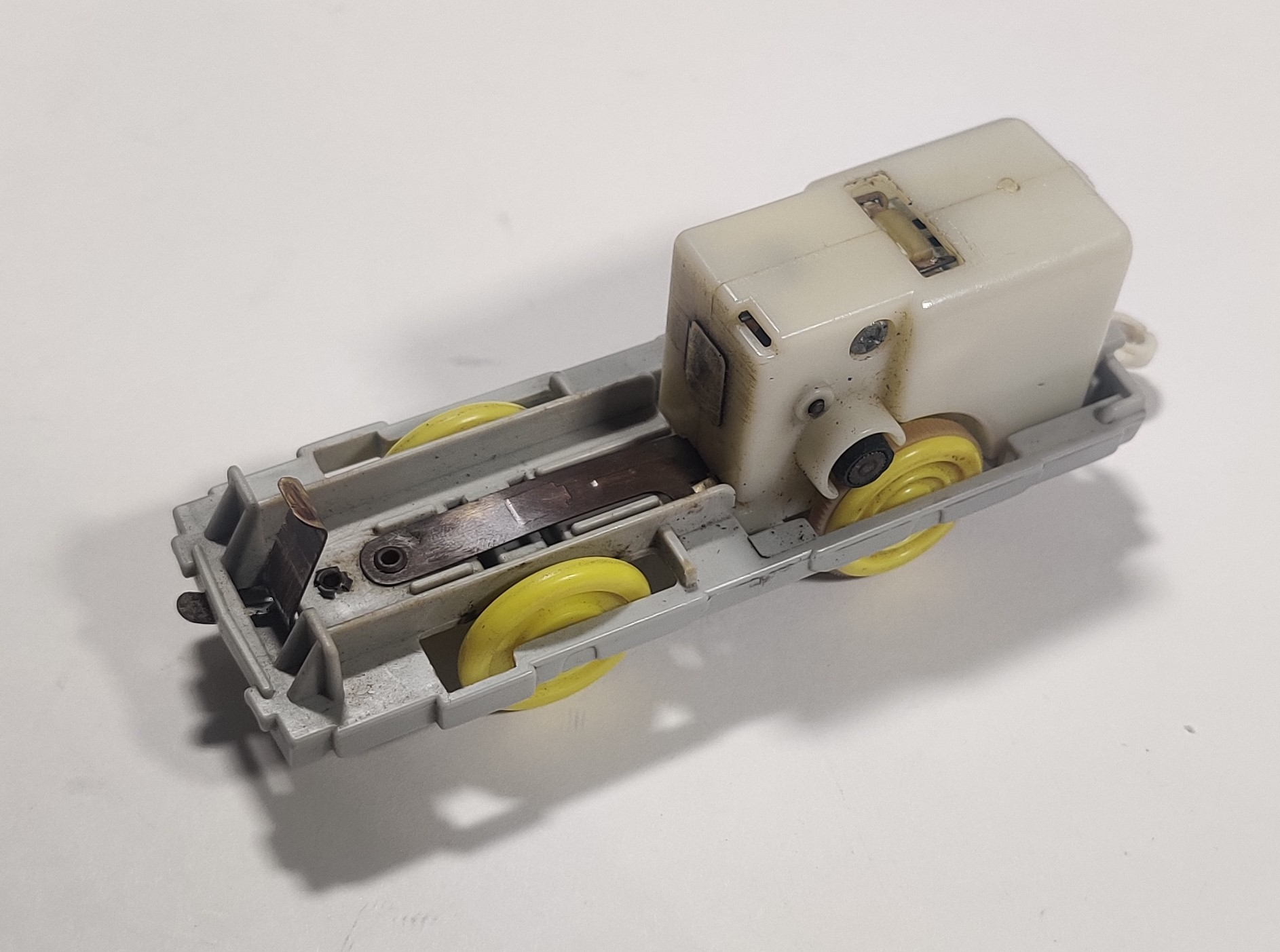
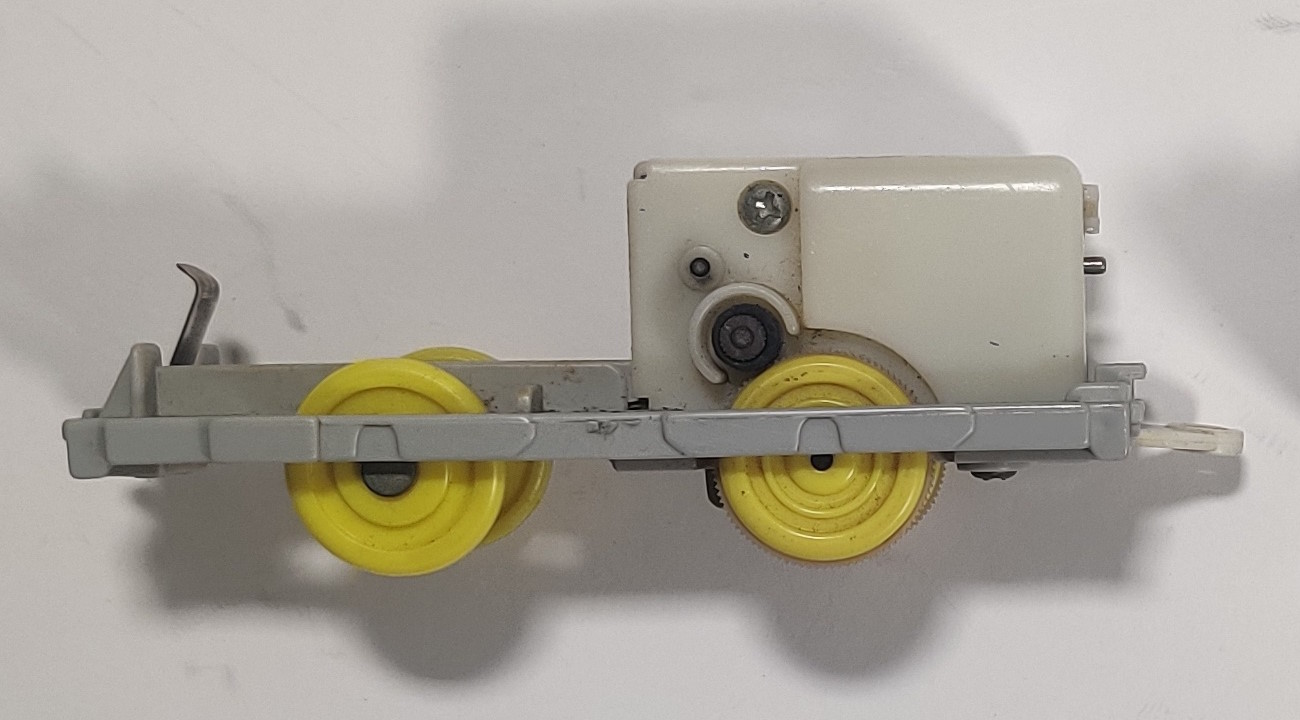
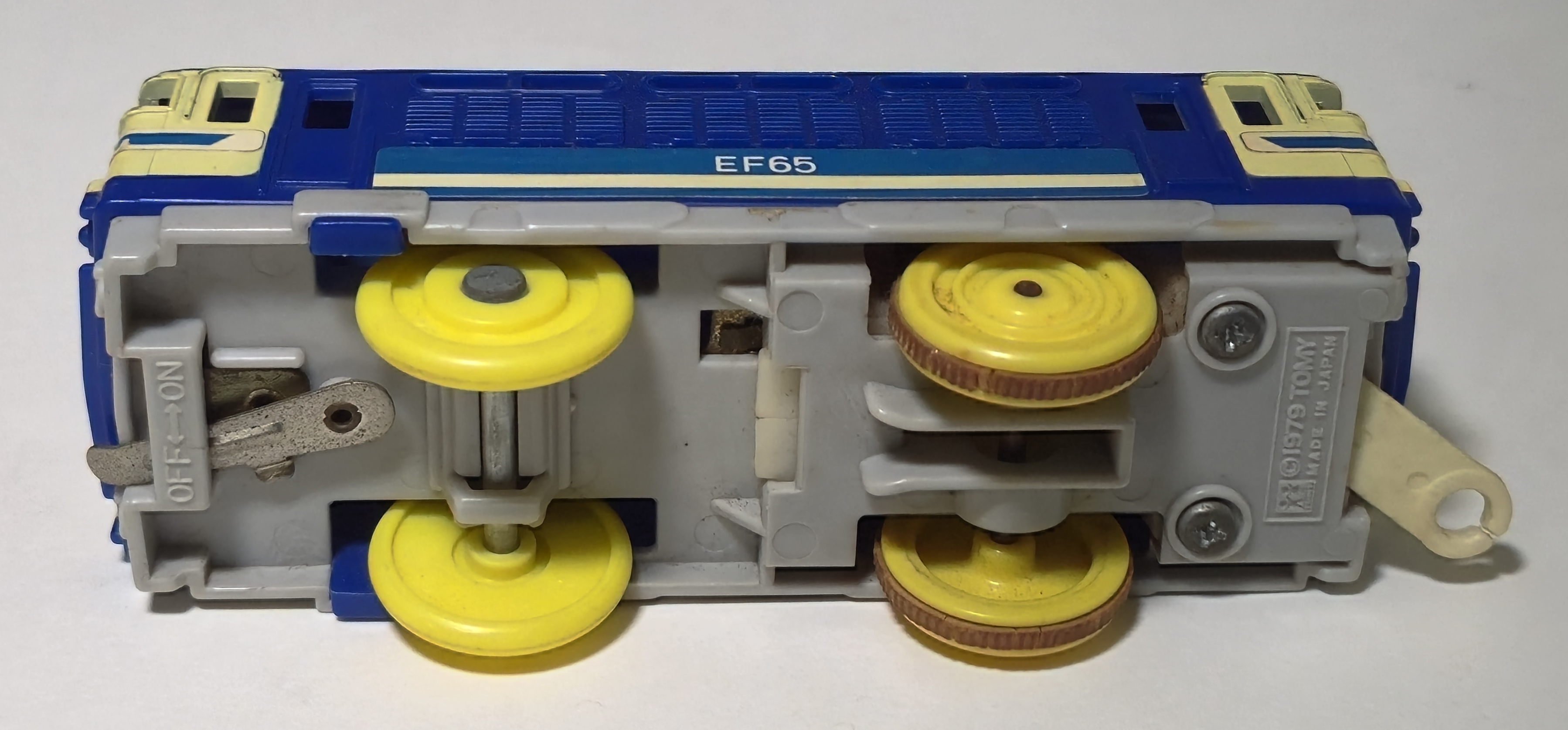
The EF65 chassis was, of course, new for this release and is marked 1979 on the bottom. Old power EF65s use the then-recent plastic rim drive gearbox. My first old power EF65 was purchased in a larger lot with several other early-mid 80s old power Plarail trains and has an older style of coach molding. The 1984 print Blue Train box I have was purchased with original coaches but an individual release EF-58 instead of the EF65 locomotive, which was substituted in to complete the original train.
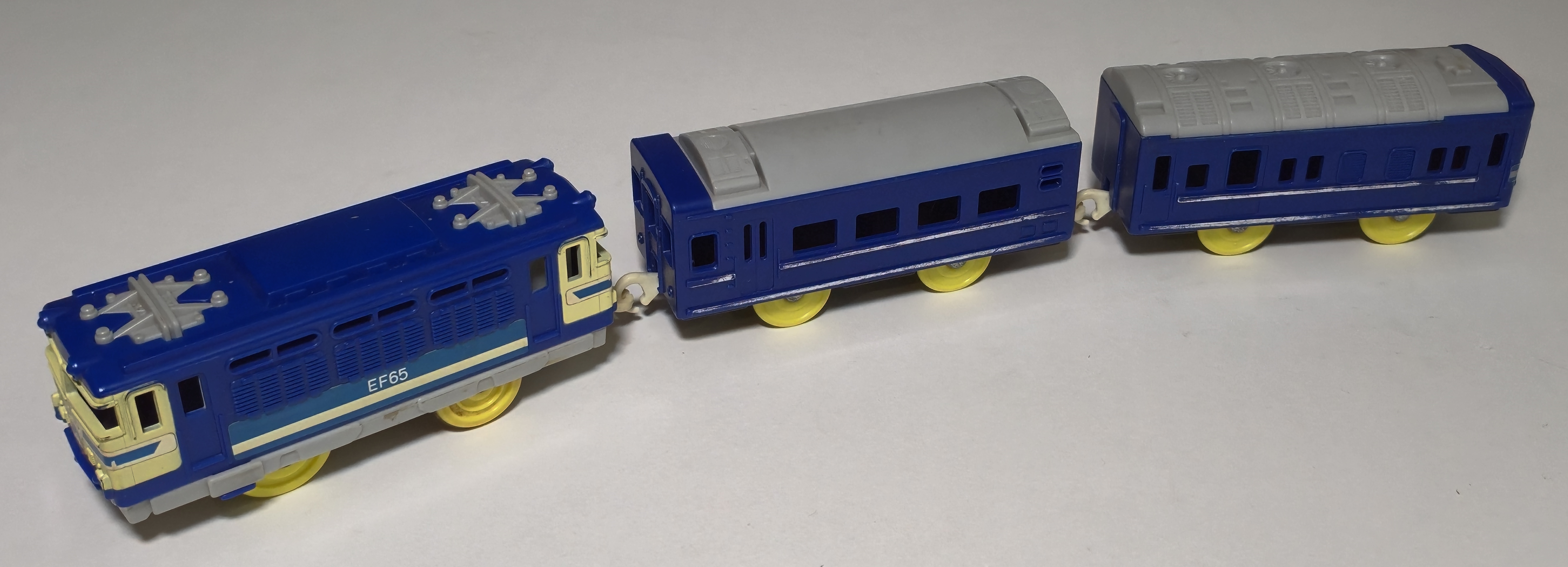
The Blue Train was also released in the Blue Train Set in 1979, a small but neat set to capitalize on the Blue Train Boom. In 1981 the Blue Train appeared again in the Blue Train Electro Railroad Crossing Set with the J-21 Electro Railroad Crossing.
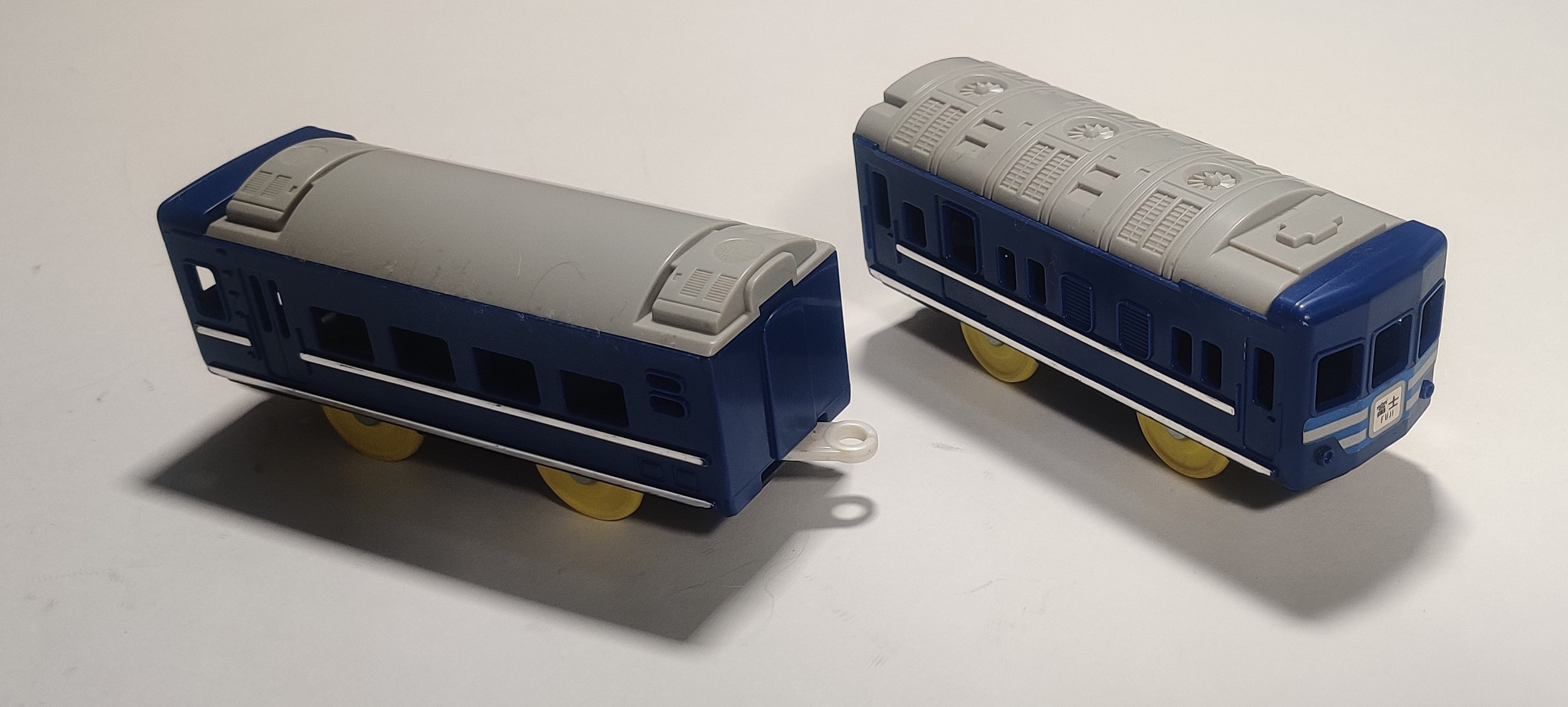
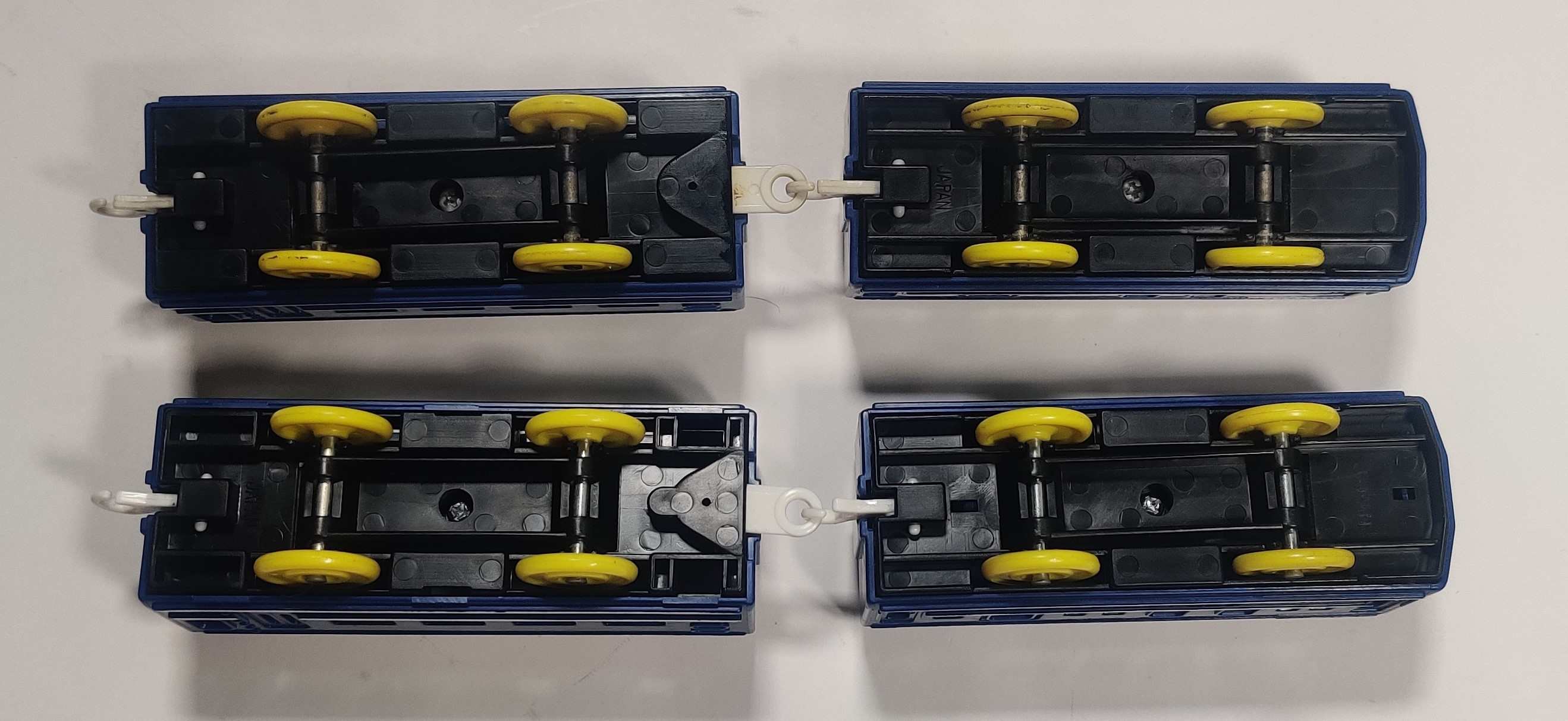
1980s blue train 24 series coaches come in two varieties, the original type and the type used after 1984 that was updated for the Radio Control Blue Train in 1984.
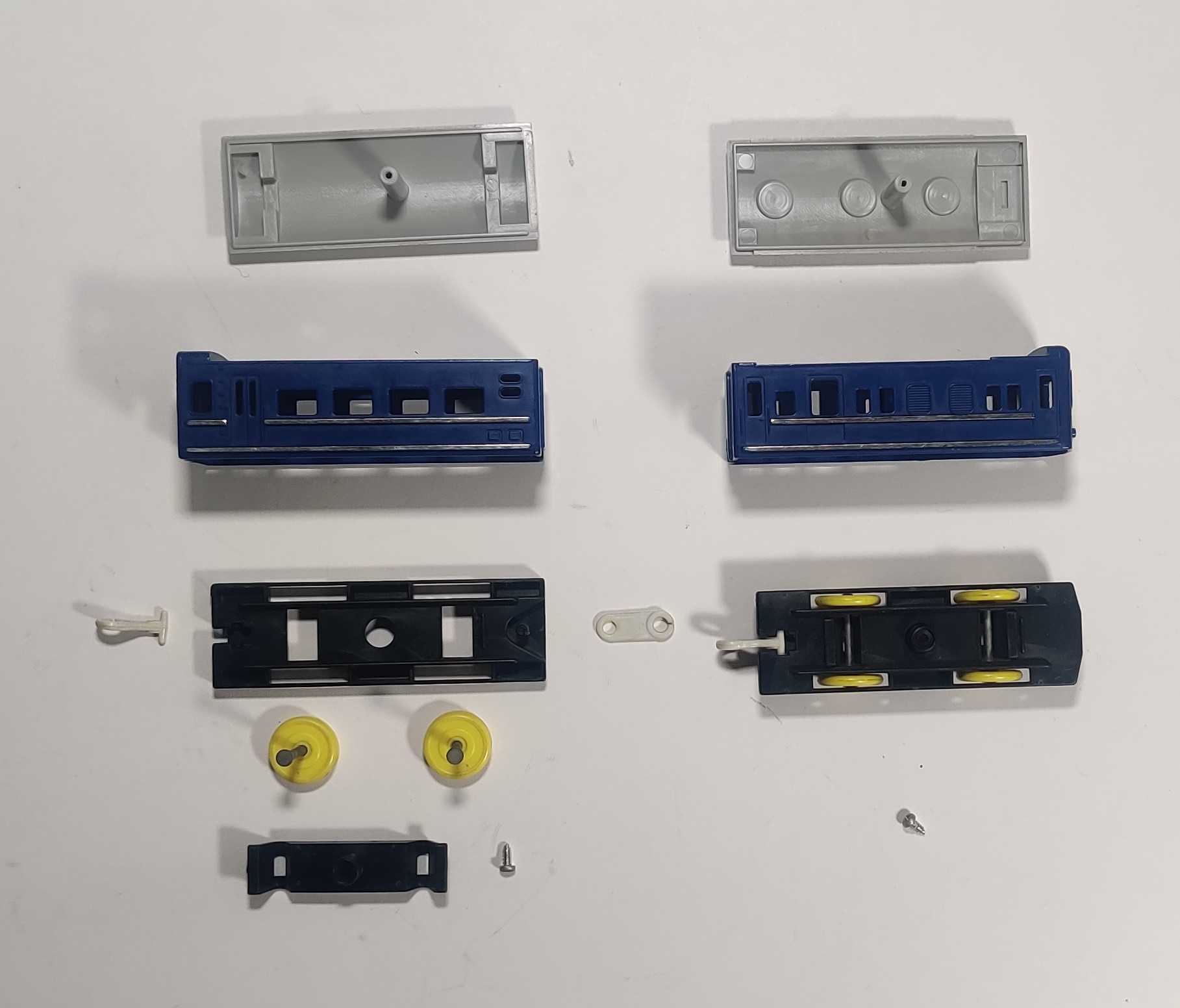
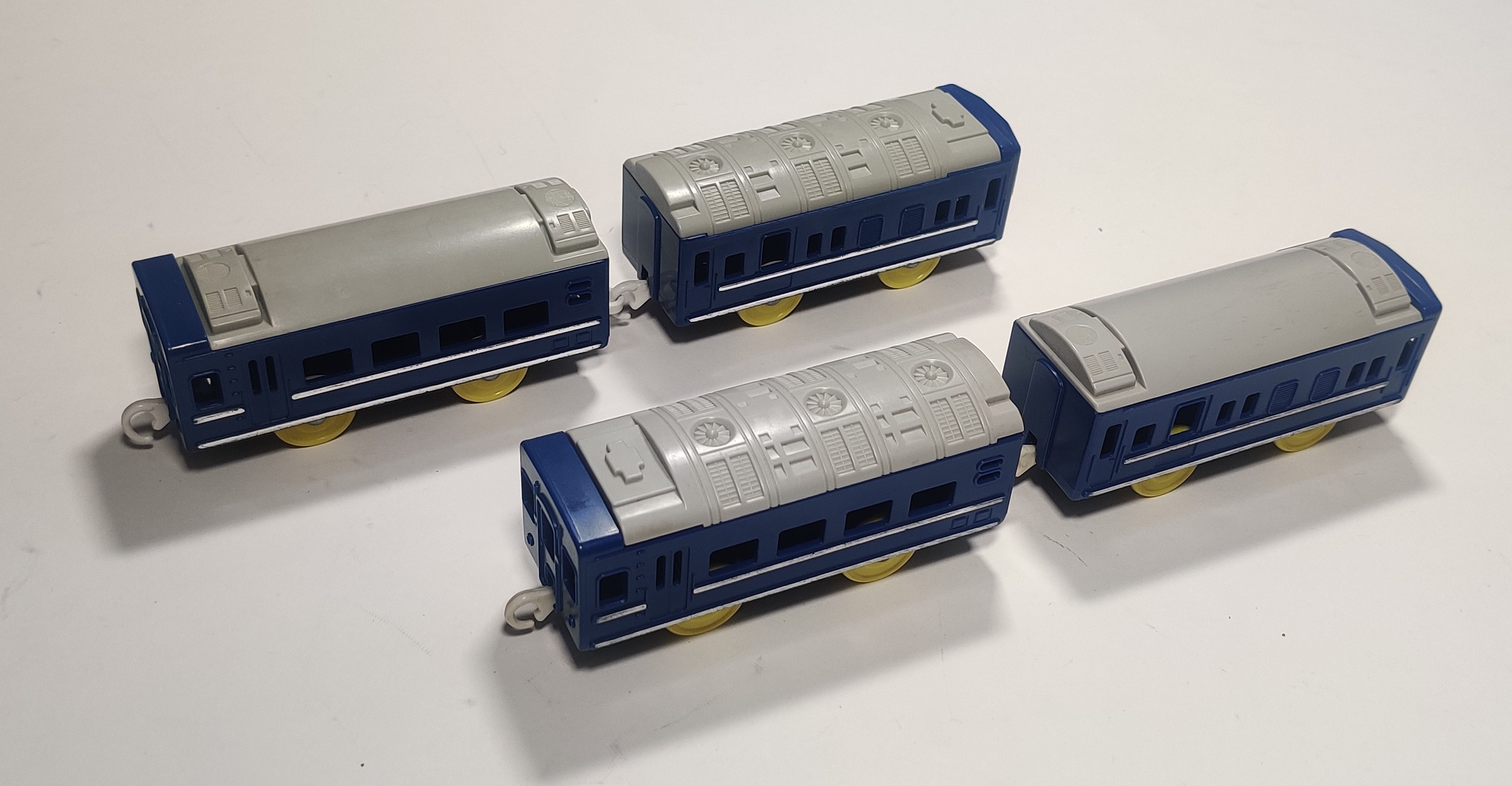
The construction of the cars is similar to other cars of the era with the classic axle holder arrangement and screw that sandwiches the body shell to the chassis. The molding of the coaches and roofs is such that, if desired, the roofs can be swapped between carriages.
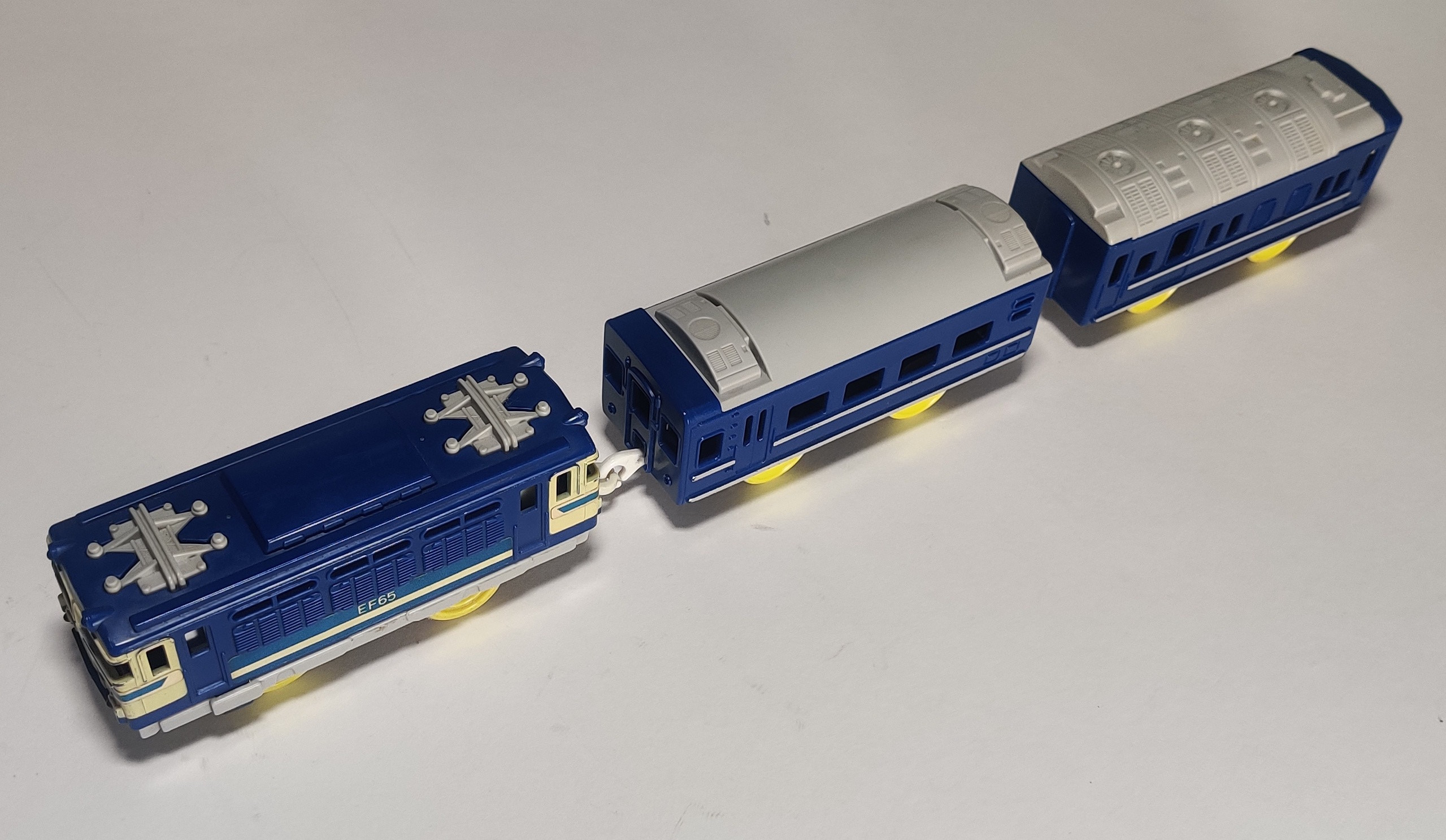
The old power Blue Train remained on sale in fifth generation boxes until the move to new power in 1987.
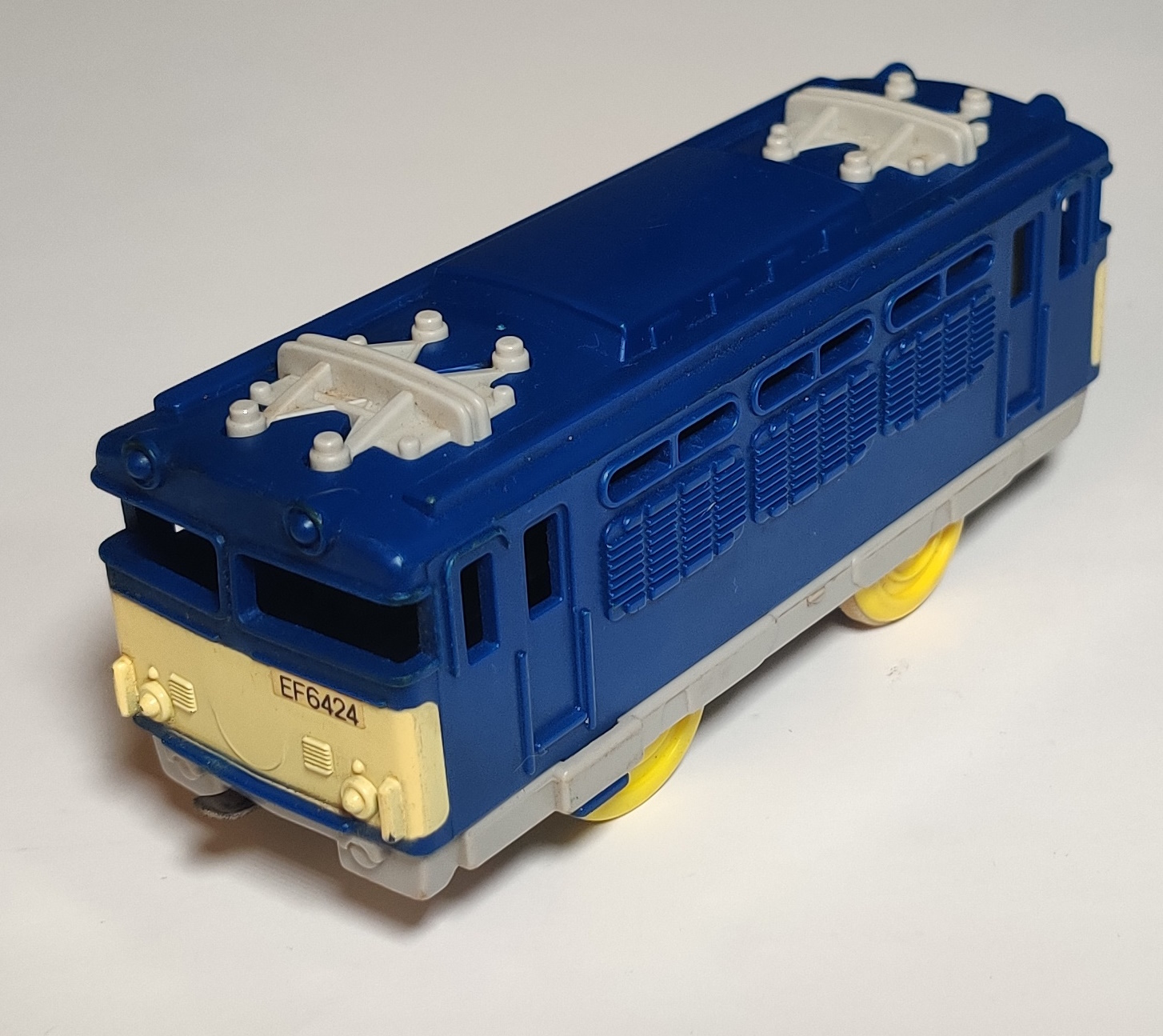
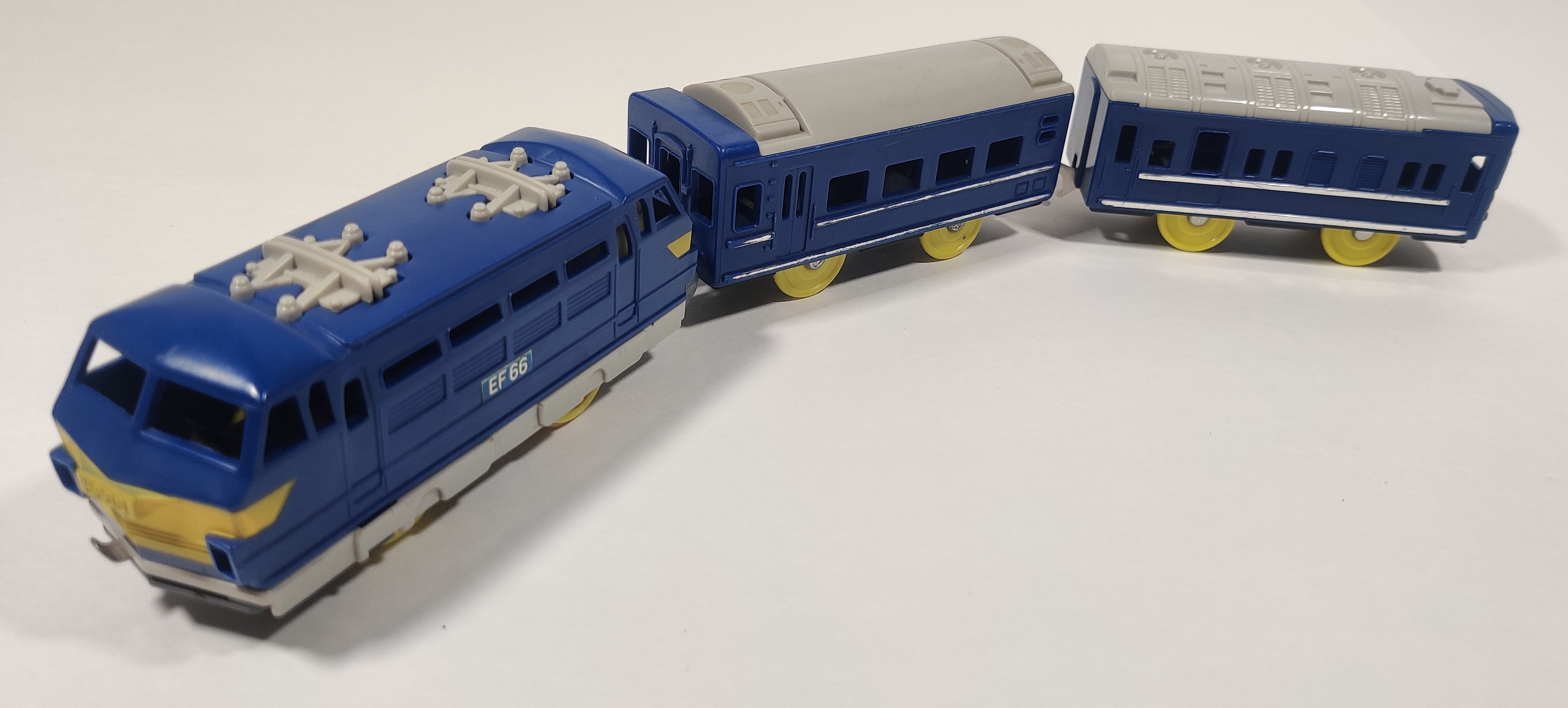
In 1984 the Family Travel Salon Car included the EF65 tooling as the only Plarail example of an EF 64, and an early Plarail train with a running number. In 1985 when EF-66s had been added to the Blue Train timetable the Fuji 24 series cars appeared with the Round-Trip EF-66 in the Round-Trip EF-66 Blue Train Set.
Blue Train (new power) (1987)
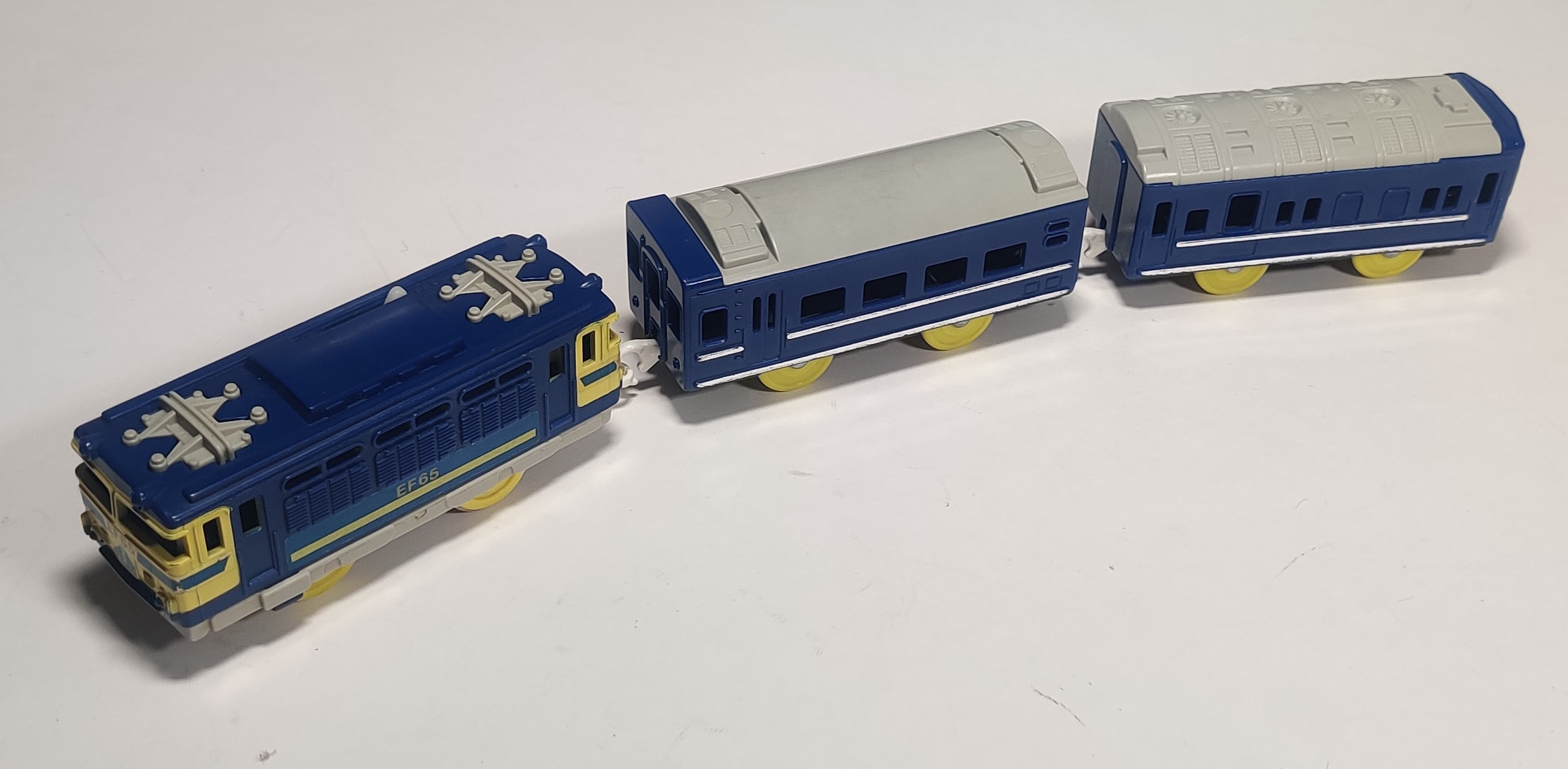
With the move to new power starting in 1987 the Blue Train was reintroduced with a single speed new power gearbox in sixth generation packaging in 1987. Early new-power examples from 1987 to 1990 or so would have been made in Japan, with production later moving to Thailand during the sixth generation.
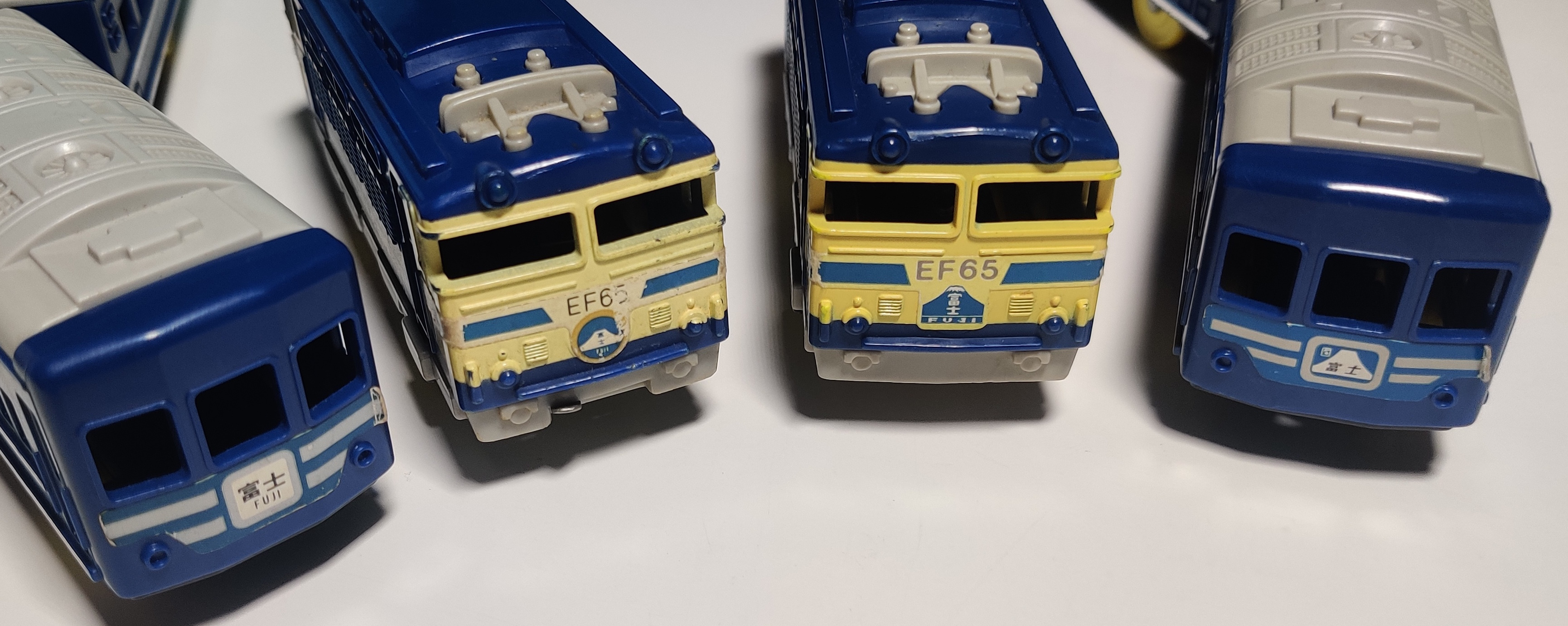
The appearance of the blue train is almost completely unchanged externally by the transition to new power. The Fuji head and tail mark stickers have been updated.
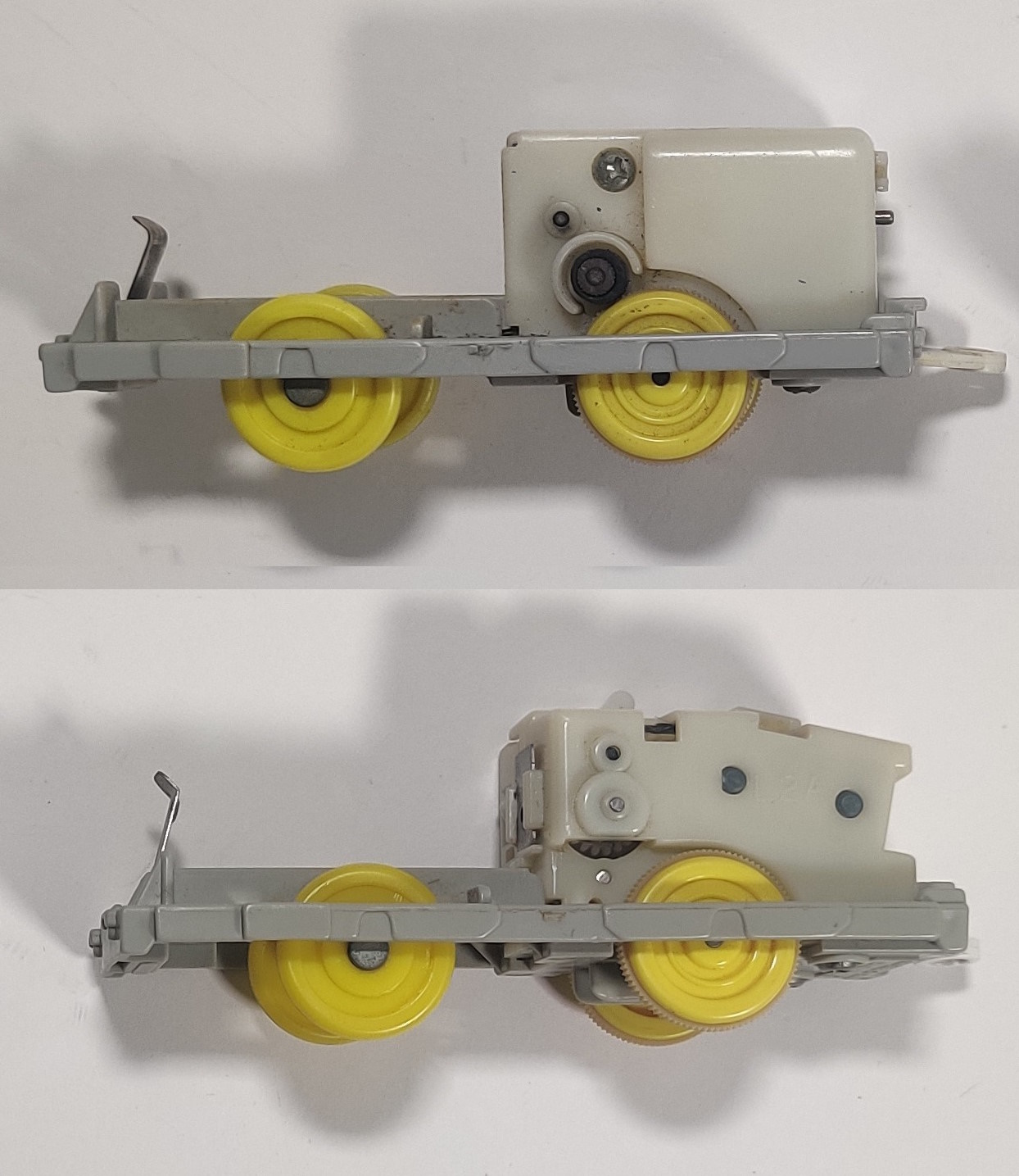
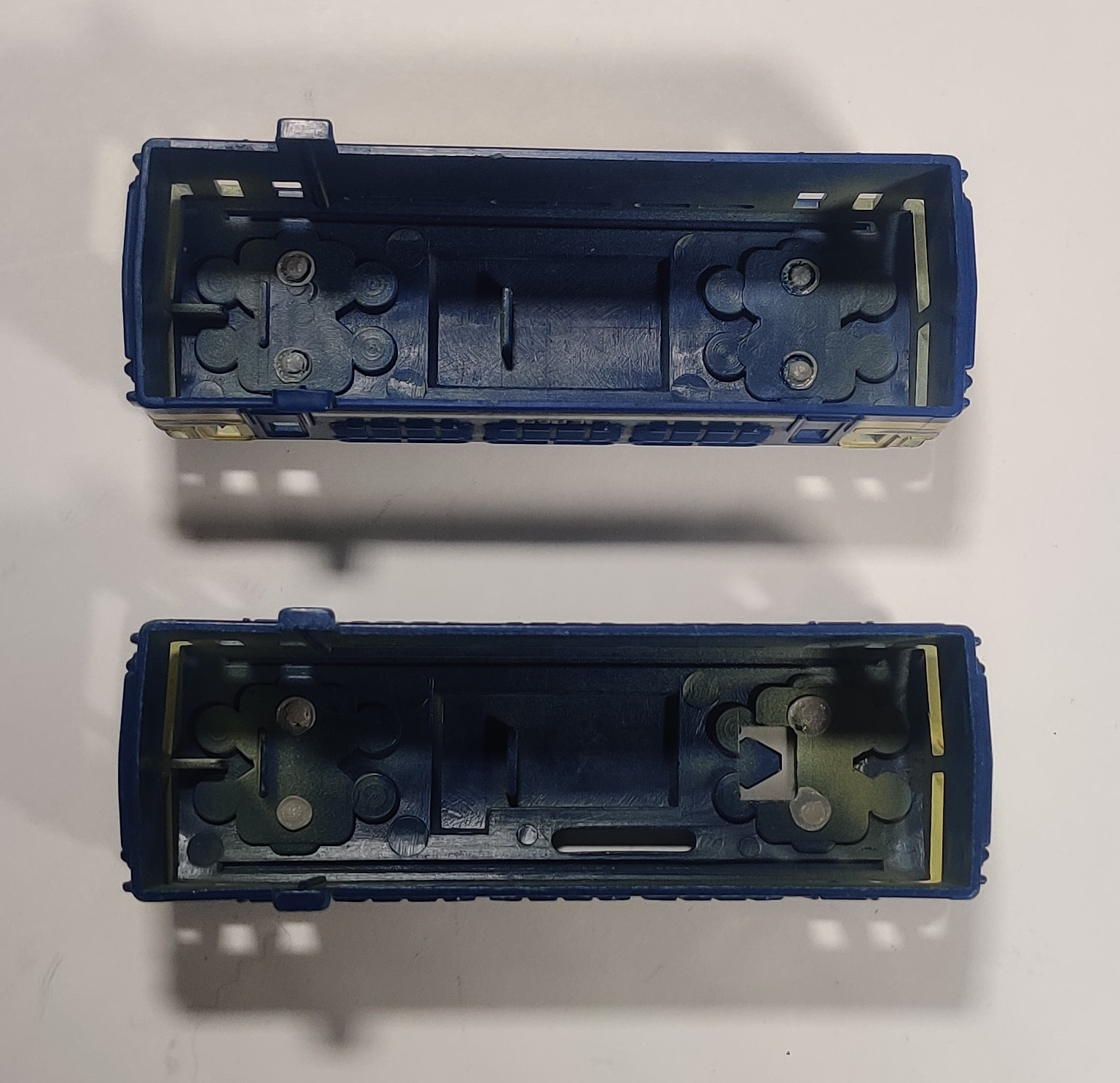
The height of the new power gearbox's hunchback and clip mean a small cutout had to be made on the new power EF65's body shell. I have a number of new power EF65s, including one exported to the U.S. in a Tomica World set, but only two have matching 24 series blue train cars. All of them were produced in Thiland. One of the EF65s is of unknown production as it has no production sticker while the other two loose three-car trains I have are marked as October 1992 and January 1995. The 1992 issue Blue Train would have been sold in a sixth generation box while the 1995 production train would have been sold in a seventh generation box.
Blue Train (seventh generation) (1994)

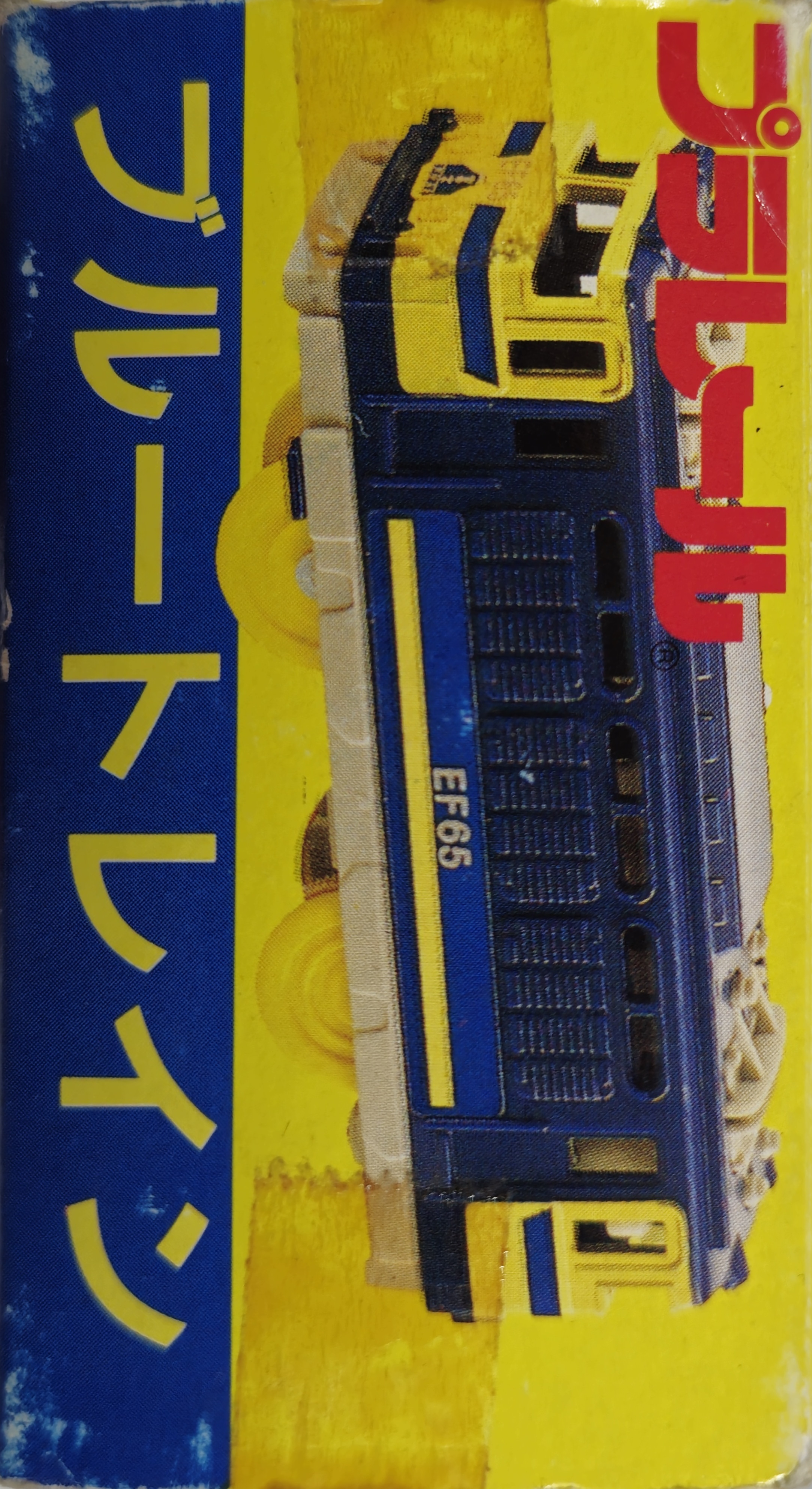

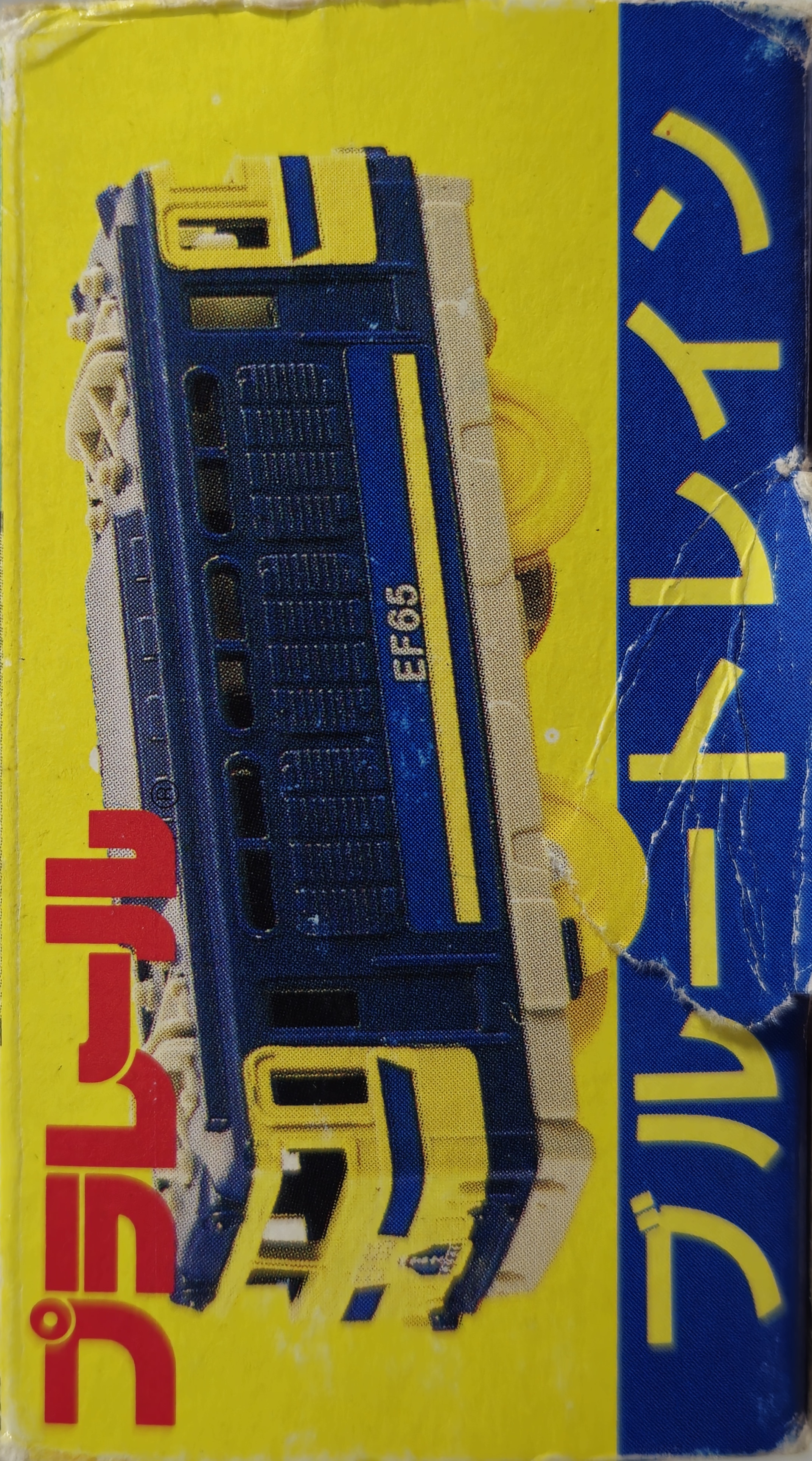


In 1994 when the range was refreshed with the new sixth generation of boxes Thailand-made Blue Trains continued to carry on the long legacy of the Plarail Blue Train. This box dates to 1997 as signified by the ST-7 mark on the rear. The rear of the box says of the Blue Train: New Express Train is a nickname for the Japanese limited express sleeper train. It runs all over Japan and is famous for the "Fuji" and "Hayabusa". It is called the "Blue Train" because the passenger cars are blue.
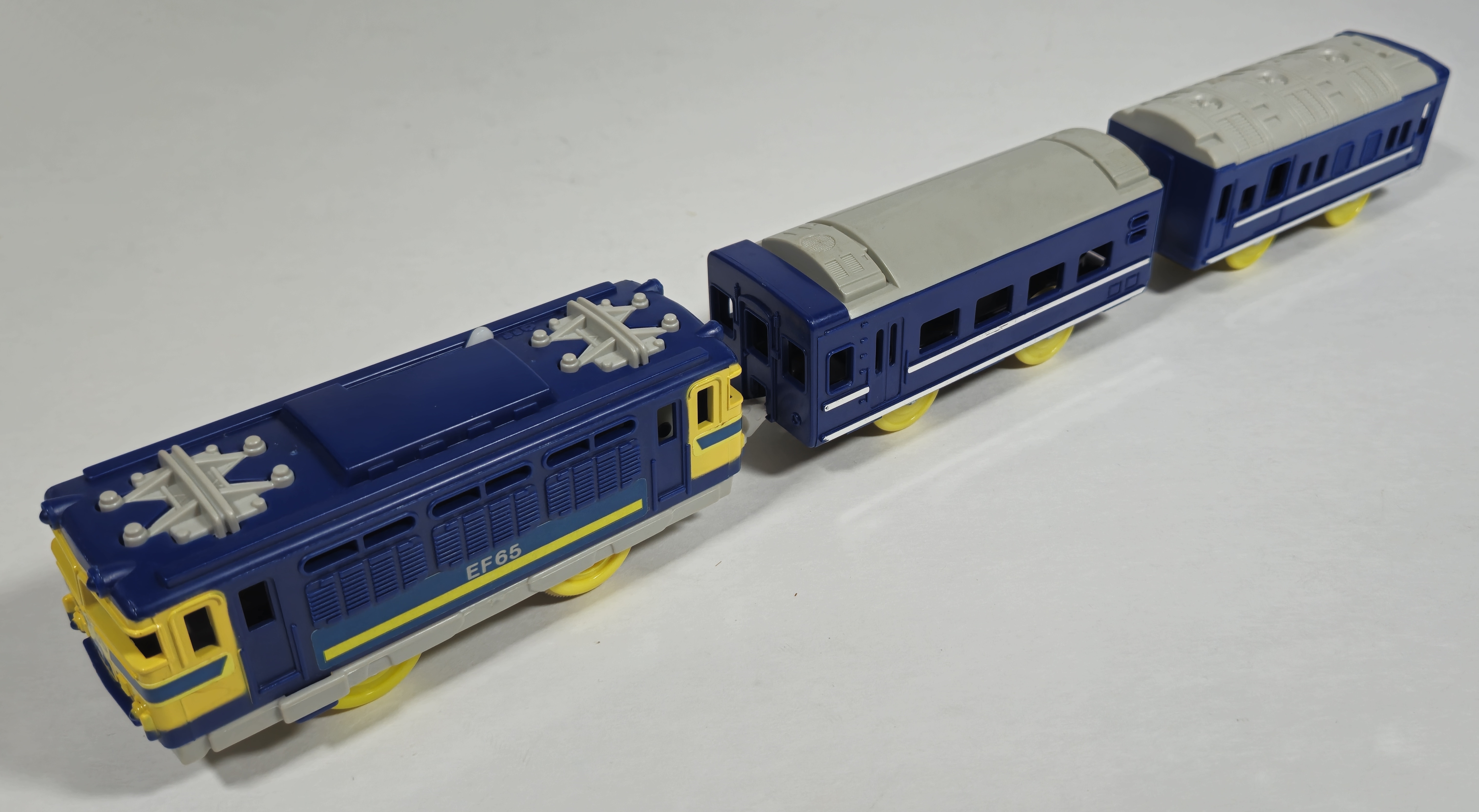
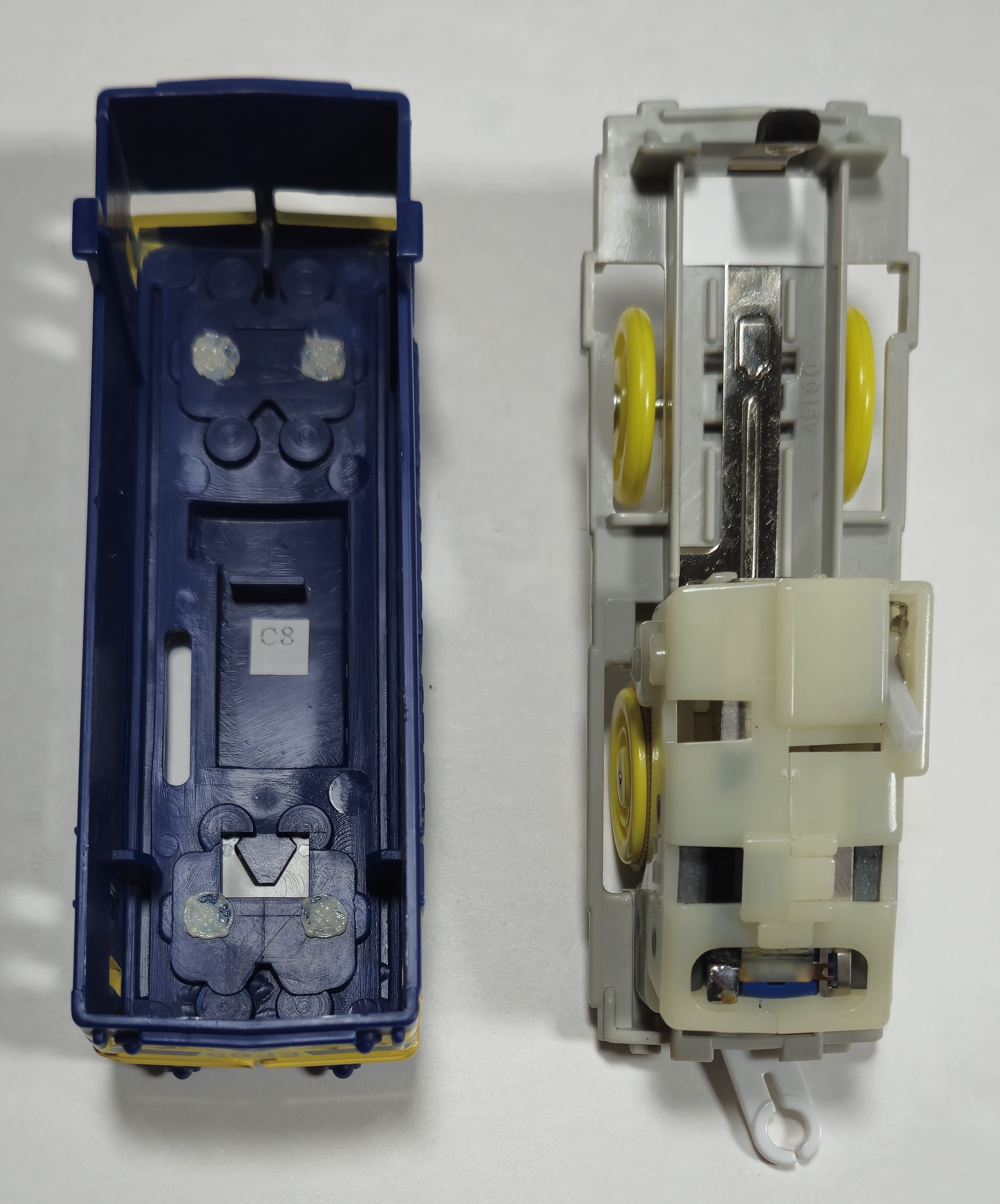
This rather nice condition Blue Train dates to March 1998 and has slightly orangey-yellow paintwork. The silver on the coaches is in good shape.
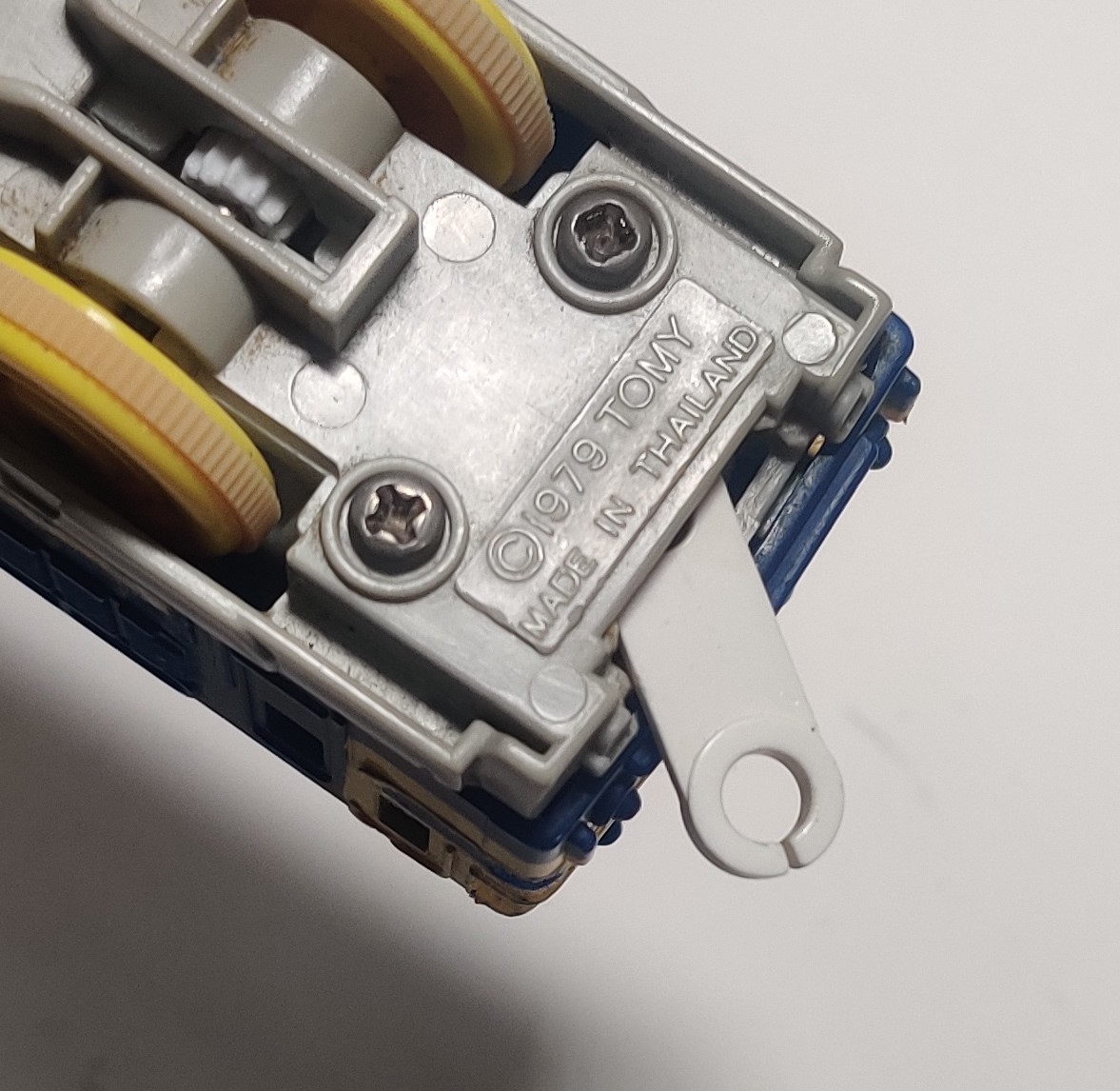

All of my new power EF65s were produced after production shifted to Thailand. The intermediate and tail cars are based on the 1984 Radio Control Blue Train with cutouts left over and now unused. The locomotive has the strain-relief style rear coupling while the intermediate car has the single-split type, but one or the other could have been replaced over time...
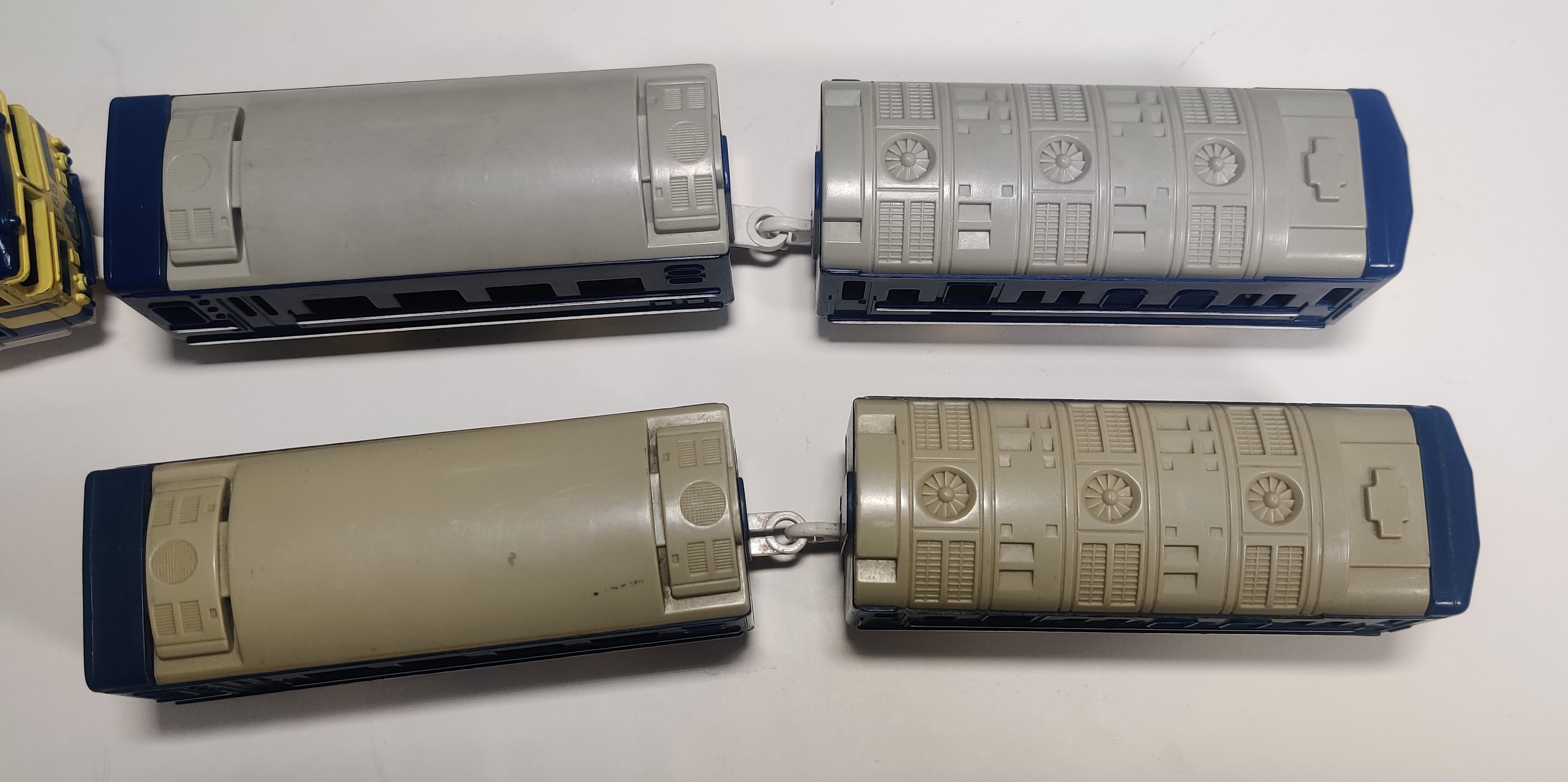
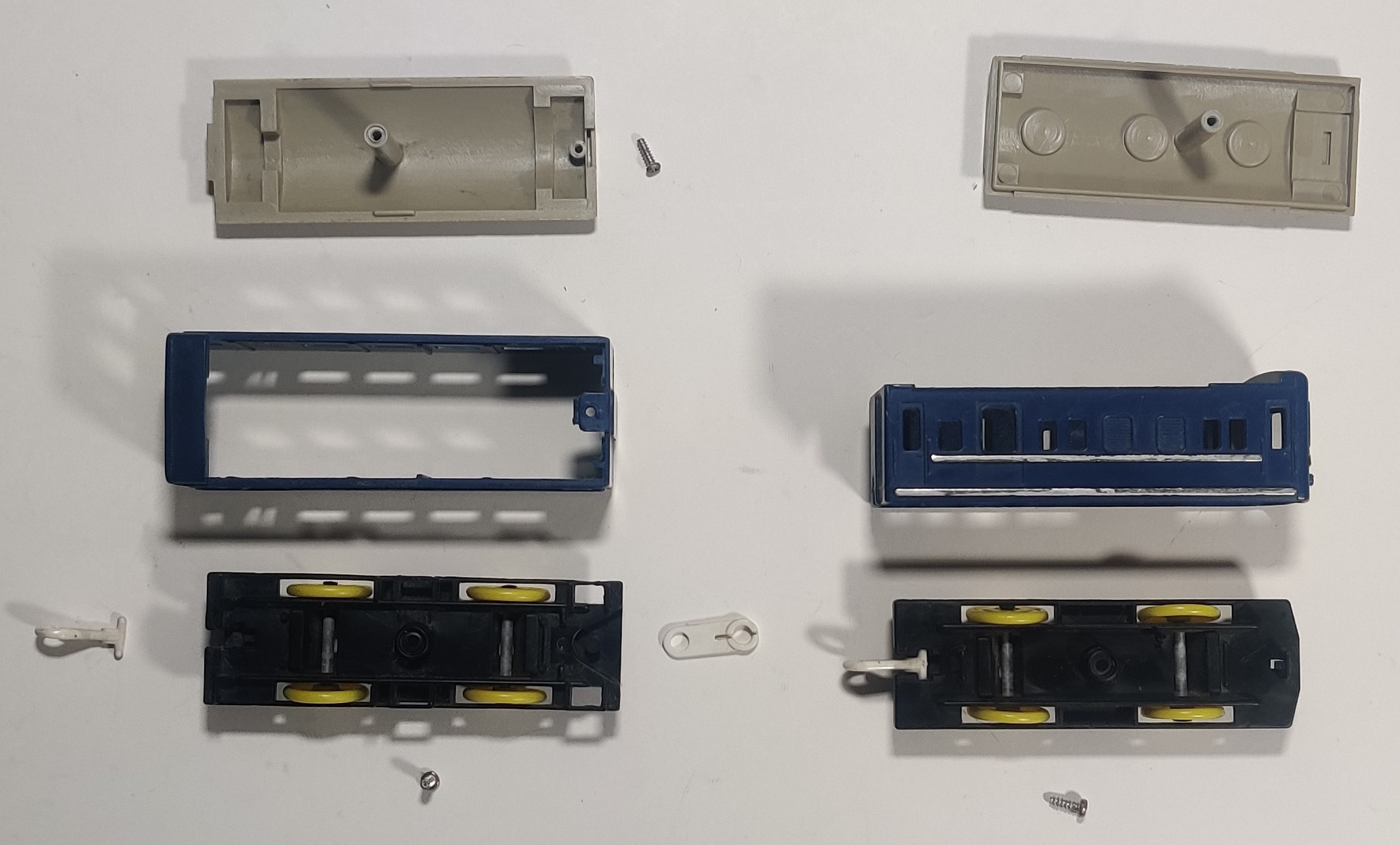
I have two other sets of Thailand-made coaches produced from the radio control Blue Train toolings. The roofs of the later set are more yellowed and use the modern rear coupling with additional strain relief. Around 1999 axleboxes were added to the tooling of the coaches and seemingly slightly later the engine itself.
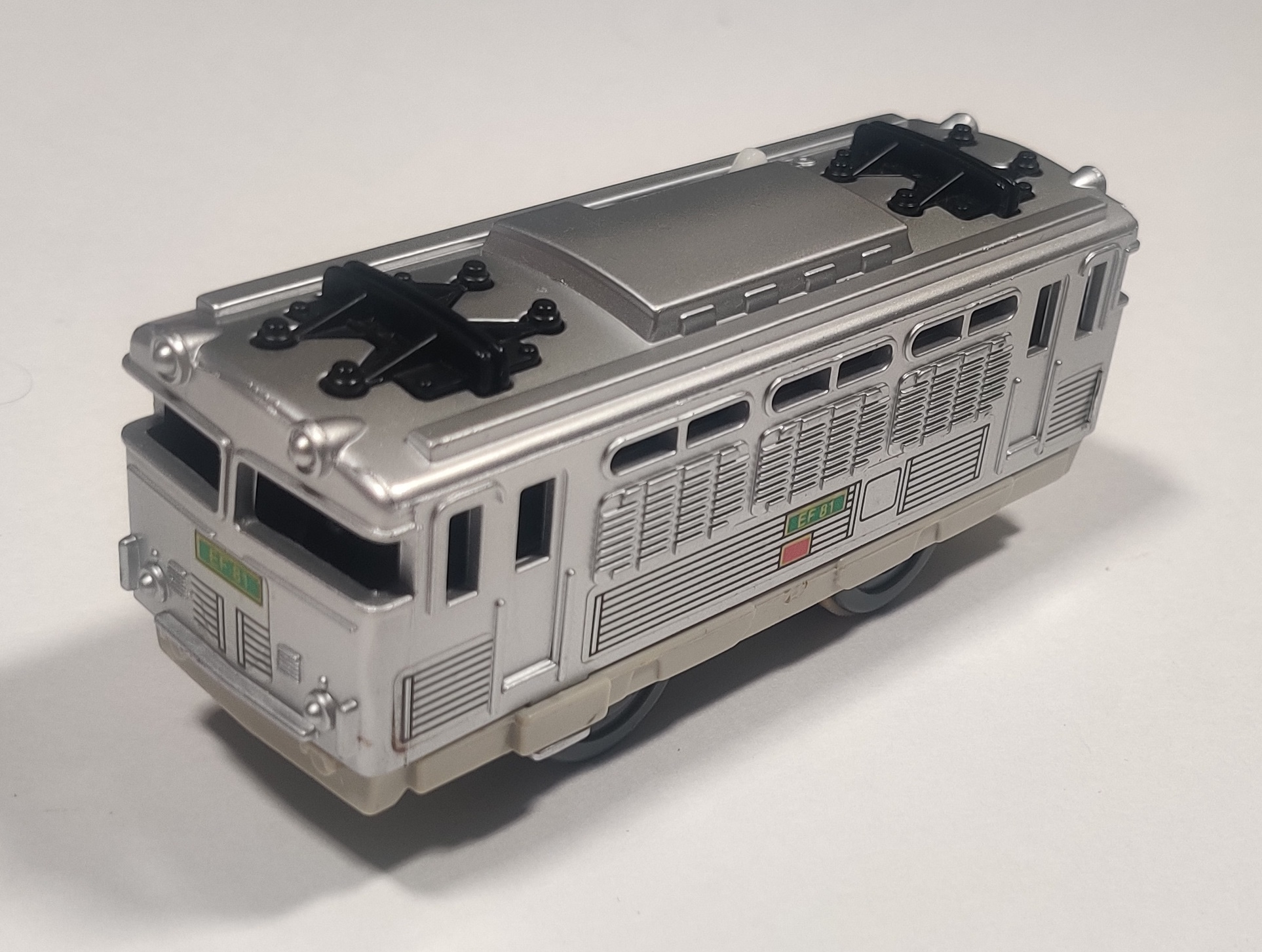
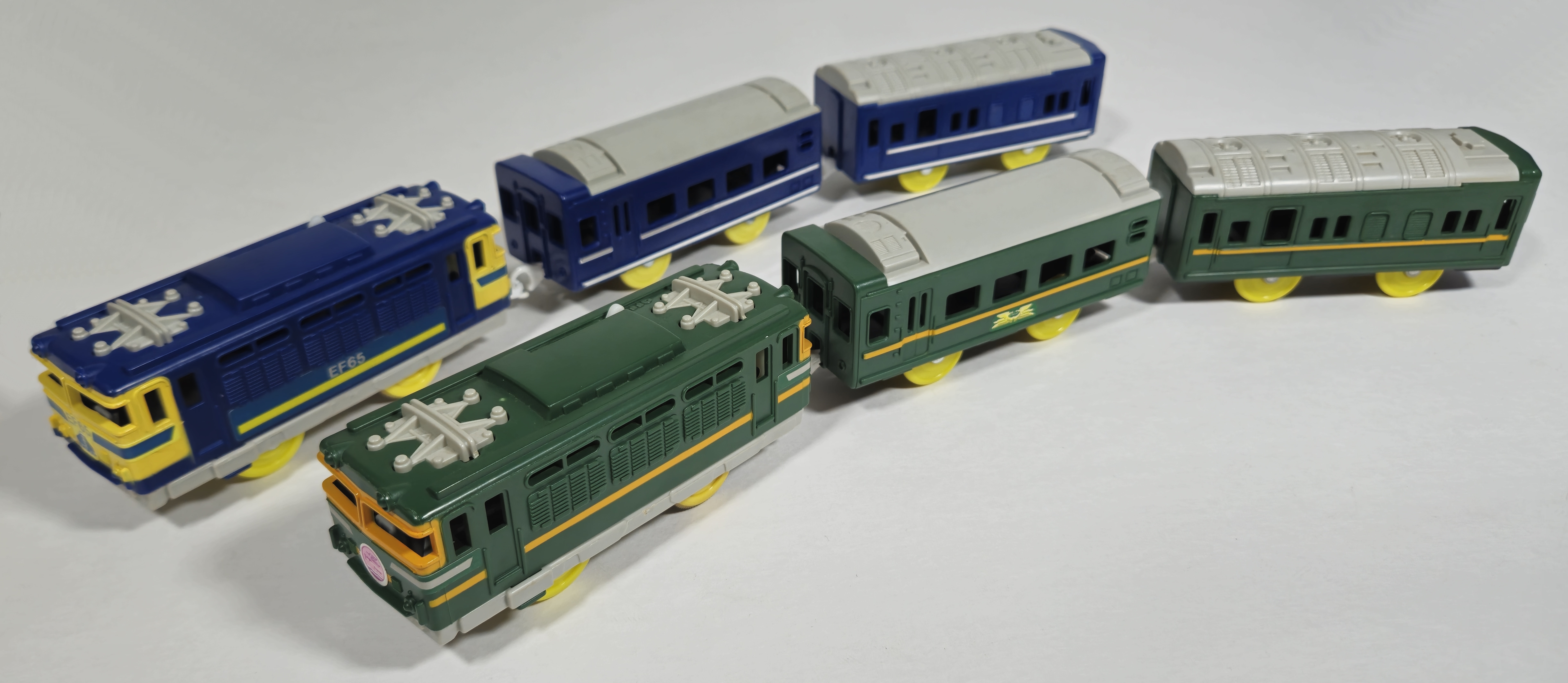
In the 1990s when the range expanded massively the EF65 tooling also used for the EF81 for the Car Train Tomica crossover releases as well as earlier releases of the Cassiopeia, with the entire Blue Train recolored for the Twilight Express.
The 24 series cars were occasionally used in sets such as the Round-Trip EF-66 Blue Train Set and D51 Sound Station Set. The passenger cars were produced in red with different stickers for the Go Go Shuppo Set Adventure Asphalt Island train pack.

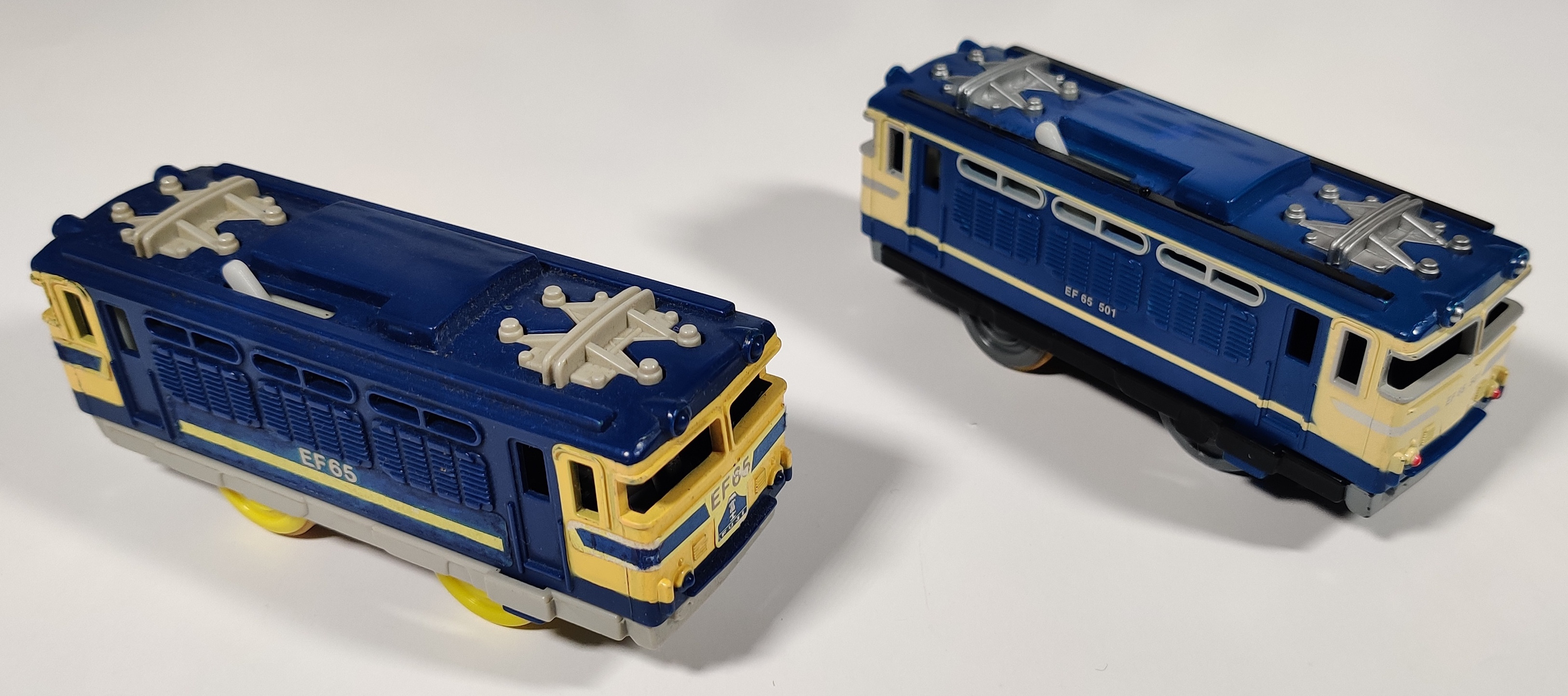
The original Blue Train was removed from the lineup with the end of the seventh generation of boxes and the push towards more realistic Plarail engines in the early 2000s. In 2003 a new Blue Train led by an EF66 was released as S-39 Blue Train. The Locomotive Depot and Five Mechanics set released in early 2002 included two EF65s, an updated blue EF 65 501 and a brown EF 65 56 both with modern detailed paint-jobs.
